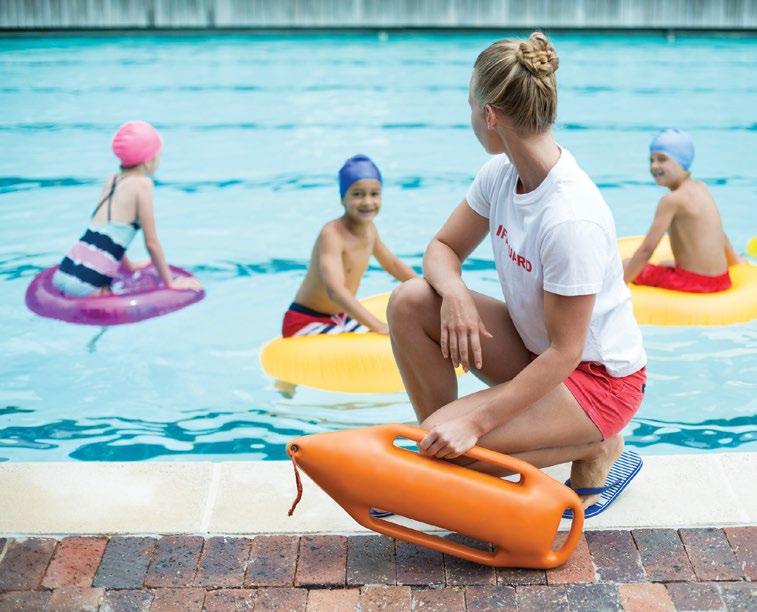




• You'll never have to worry about your teeth slipping or falling out
• No need for adhesive
• Eat and smile like you have had these teeth for your whole life
• Prevent bone loss and gum recession while preserving the jawbone and maintain a more youthful facial structure
• An investment that can last a lifetime

• Increased chewing capacity—eat foods like apples, steak, corn on the cob, and more
• Same day full-arch restoration with only four implants
• No more traditional dentures & no more denture sores
SHAWN B. DAVIS, DMD Board-Certified Oral & Maxillofacial Surgeon
• Easy to clean and care for
TEETH-IN-A-DAY ALL-ON-4© Scan the QR code to schedule your appointment with us today!

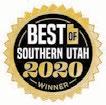




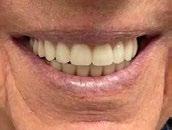
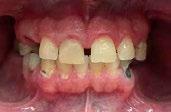
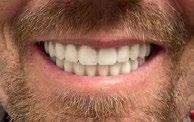



Discover valuable insights to inform your decisions and take a proactive approach with your health. Our easy to use, and affordable self-guided lab kits include tests that look at your brain health, hormones, toxicity, gut health, nutrient processing, DNA testing, and more —all from the convenience of home. Plus, every kit comes with a consultation to review your results!

SCAN THIS CODE TO BE TAKEN DIRECTLY TO OUR SELF-GUIDED HEALTH LABS PAGE
www.FusionSpecialtyPharmacy.com
SANTA CLARA
1100 Canyon View Dr, Suite C
Santa Clara, UT 84765
Phone: (435) 703-9680
Fax: (855) 853-3465
Email: rx@rx-fusion.com
ST. GEORGE
617 E. Riverside Dr., Suite 104
St. George, UT 84790
Phone: (435) 656-2059
Fax: (435) 656-3059
Email: fp@rx-fusion.com
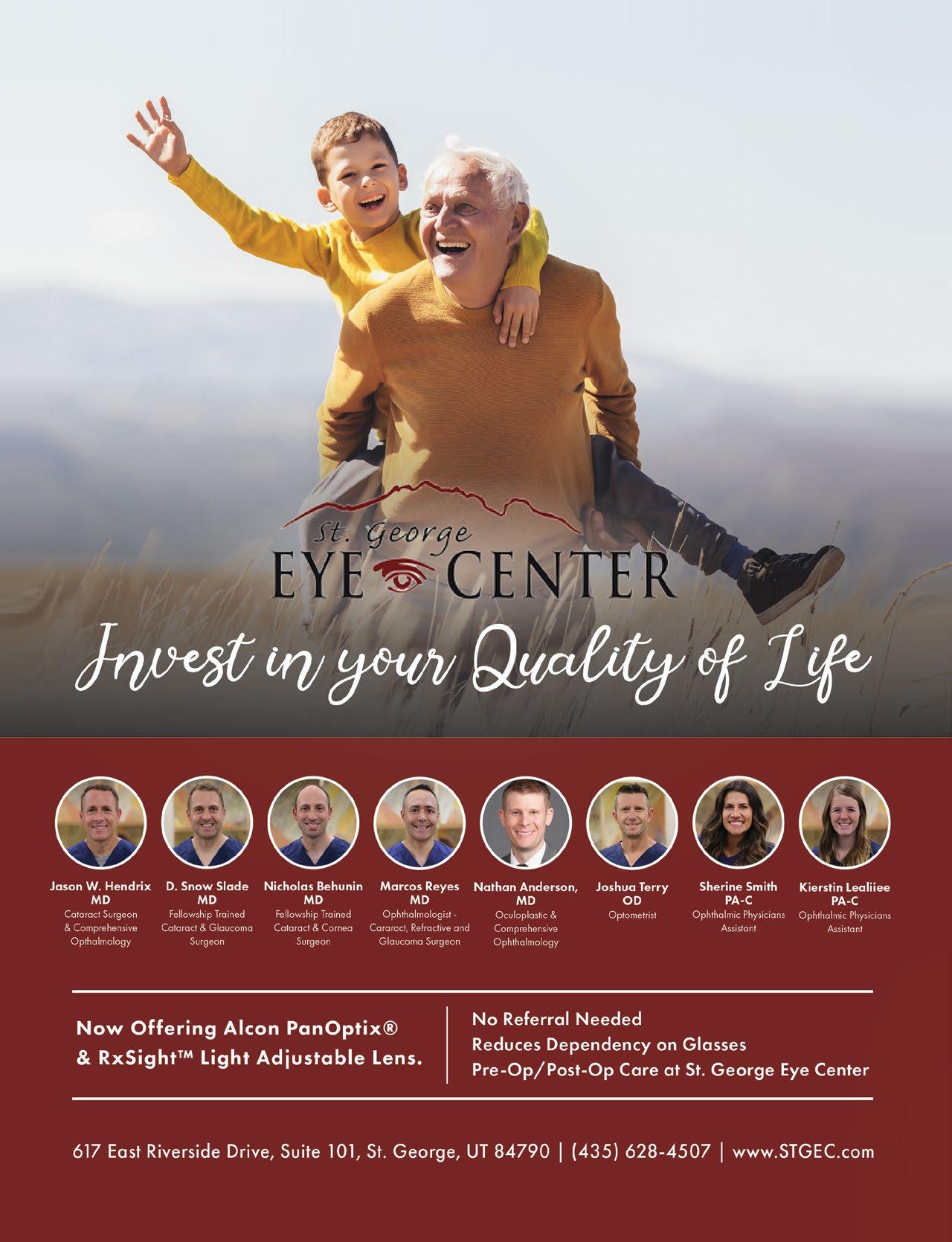
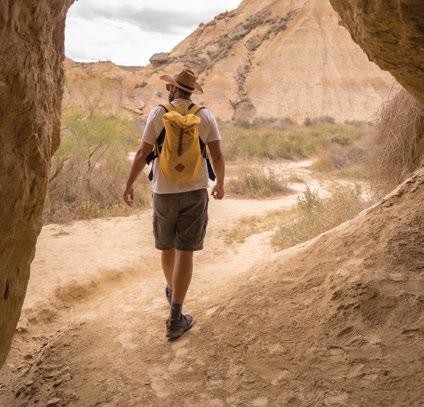
Health and Fitness
Snow Canyon’s Unique Ecosystem
Accessible Trails Are Waiting to Be Explored 14
Core Training to Improve Your Golf Swing ..................................................... 20
Take Advantage of Outdoor Activities during the Summer 22
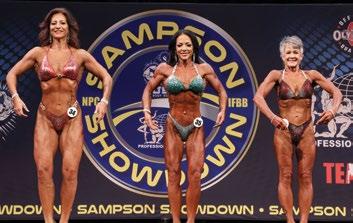
MAY/JUNE 2024
On The Cover:
Snow Canyon’s Unique Ecosystem and Accessible Trails Are Waiting to Be Explored 14
Cover photo of Snow Canyon courtesy of Stewart Baxter

Disposal: Protecting People and the Environment
Women’s Health: Pregnancy during the Summer Months....................................
Youth Diaries: Finding Joy through Challenges and Change
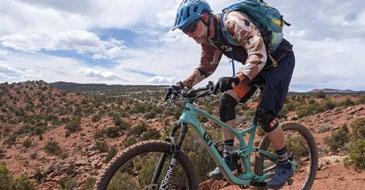
Stay to
Pregnancy during the Summer Months.................................... 24 Stay Hydrated to Keep That Summer Glow ................................................ 26
Only like Riding Downhill
I Only like Riding Downhill ........................ Are You at Risk for Prediabetes?
Greenlight Your Favorite Family Dinners ..............................................
Greenlight Your Favorite Family Dinners
Vista Healthcare: Helping Those Suffering from Accident-Related
Vista Healthcare: Helping Those Suffering from Accident-Related Injuries
Keep Your Pet Safe and Healthy This Summer
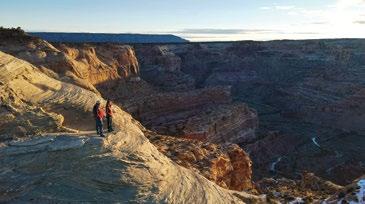
Untangling the Threads: Exploring the Differences between Dry Needling Acupuncture
Halitosis or Bad Breath: I Don’t Want Either One
Let’s Get Back to Basics.................................
DIY Car Care for Everyone ..........................
Don’t Let the Tax Tail Wag the Dog
Walk Your Way to Better Health

The way we talk about sexual violence matters. Our words can be used to foster a culture of safety, respect, and equality that stops sexual violence before it happens. Or to show support for survivors, shutdown harmful misconceptions, promote consent, and to



Let’s face it: winter can leave us feeling a bit like a cluttered attic. We’ve been hibernating and indulging in comfort food. Maybe our exercise routines have been on a ski vacation (along with our motivation). But guess what? Spring has fully sprung, and just like this season motivates us to tackle the cobwebs and dust bunnies in our homes, it can also inspire us to declutter our health routines!
There is something almost magical about the desert. Maybe it’s the way the sun sets, casting long shadows over the red rocks or the way the air cools in the evening, bringing a slight reprieve from the day’s relentless heat. But for me, the magic was always in the adventures I shared with my dad. One particular escapade, however, stands out, not only for its heart-stopping surprise encounter but for the lesson it imparted.
Let’s face it: winter can leave us feeling a bit like a cluttered attic. We’ve been hibernating and indulging in comfort food. Maybe our exercise routines have been on a ski vacation (along with our motivation). But guess what? Spring has fully sprung, and just like this season motivates us to tackle the cobwebs and dust bunnies in our homes, it can also inspire us to declutter our health routines!
My friend Dave is the perfect example. A self-proclaimed “professional Netflixer and snacker,” Dave spent most winter evenings glued to the couch, his only companion a giant bag of flavored chips. By spring, he felt sluggish. His clothes seemed tighter, and his energy levels were as low as a dead phone battery.
My friend Dave is the perfect example. A self-proclaimed “professional Netflixer and snacker,” Dave spent most winter evenings glued to the couch, his only companion a giant bag of flavored chips. By spring, he felt sluggish. His clothes seemed tighter, and his energy levels were as low as a dead phone battery.
But Dave, bless his heart, is nothing if not resourceful. Inspired by the blooming flowers outside and the urge to finally clean his overflowing junk drawer, he decided to clean up his health, too. Out went the nightly snacking sessions—replaced with a bowl of fruit and Greek yogurt—and in came a brisk evening walk around the park with his four-legged companion, Ruger. At first, it wasn’t easy: the couch had a powerful siren call. But Dave persevered one step at a time.
My dad had an unwavering passion for the outdoors, a love that was deeply rooted in the rugged landscapes of southern Utah. He reveled in the beauty of the red rock canyons, the sprawling deserts, and the hidden springs that dotted the region. He had a rich appreciation for the area’s physical beauty and a profound respect for the rich heritage of the land. Southern Utah, with its ancient petroglyphs and remnants of ancestral Puebloan dwellings, was a living testament to the native peoples who once called this area home. My dad instilled in me the same love and respect for this area, and we would often go out together looking for what we considered the ultimate treasure: an arrowhead.
But Dave, bless his heart, is nothing if not resourceful. Inspired by the blooming flowers outside and the urge to finally clean his overflowing junk drawer, he decided to clean up his health, too. Out went the nightly snacking sessions—replaced with a bowl of fruit and Greek yogurt—and in came a brisk evening walk around the park with his four-legged companion, Ruger. At first, it wasn’t easy: the couch had a powerful siren call. But Dave persevered one step at a time.
One spring morning, we set off with our gear: a couple of old army canteens and a pocket knife. The chill still lingered in the air, but the desert was alive with the promise of discovery. Dad led the way, his strides confident and purposeful, while I trailed behind, my eyes scanning the ground for any sign of ancient relics.
Within a few weeks, Dave felt like a whole new person. He had more energy, his clothes fit better, and his confidence surged. The walks became a source of joy, a chance to connect with nature and clear his head. Ruger is loving it, too. Spring cleaning his health did wonders for Dave, both physically and mentally.
Within a few weeks, Dave felt like a whole new person. He had more energy, his clothes fit better, and his confidence surged. The walks became a source of joy, a chance to connect with nature and clear his head. Ruger is loving it, too. Spring cleaning his health did wonders for Dave, both physically and mentally.
How can you tidy up your bad health habits? Here are some ideas:
How can you tidy up your bad health habits? Here are some ideas:
• Read more articles. Take time to read all the articles in this issue of St. George Health & Wellness Magazine. Then, apply what you learn.
After a few hours, we found ourselves in a particularly rocky area. I was lost in conversation with my dad and was not paying much attention to the terrain when I took a step forward and heard the unmistakable sound—a rattling that sent chills down my spine. There, coiled and ready to strike, was a Mojave green rattlesnake. Its tongue flickered in and out as it locked its eyes on me, and for a moment, time stood still. My heart pounded in my chest; I could feel the blood drain from my face. Then Dad’s hand was on my shoulder, pulling me back gently but firmly.
• Read more articles. Take time to read all the articles in this issue of St. George Health & Wellness Magazine. Then, apply what you learn.
“Easy, son,” he said, his voice calm and steady. “Just move slowly.”
• Swap your soda for sparkling water. It may sound simple, but ditching sugary drinks can make a big difference. Add a squeeze of citrus for some flavor!
• Swap your soda for sparkling water. It may sound simple, but ditching sugary drinks can make a big difference. Add a squeeze of citrus for some flavor!
• Trade the elevator for the stairs. Your heart will thank you. And those extra steps will help you to reach your daily step count.
• Trade the elevator for the stairs. Your heart will thank you. And those extra steps will help you to reach your daily step count.
We backed away, giving the snake plenty of space. It watched us for a moment longer before it slithered away, disappearing into the rocky crevices. I stood there, my legs shaking, the adrenaline still coursing through my veins. Dad knelt beside me, his hand still on my shoulder.
• Dust off your workout gear. Remember those fancy yoga pants you bought with good intentions? Time to unleash their inner warrior! Even a short workout is better than no workout at all.
“You okay?” he asked, his eyes searching mine. I nodded, but the fear and excitement of the encounter had left me shaken. Dad smiled that reassuring smile that always made me feel safe.
• Dust off your workout gear. Remember those fancy yoga pants you bought with good intentions? Time to unleash their inner warrior! Even a short workout is better than no workout at all.
• Declutter your kitchen. Get rid of those processed snacks lurking in your pantry. Replace them with fresh fruits and veggies—a vibrant spring bouquet for your insides!
• Declutter your kitchen. Get rid of those processed snacks lurking in your pantry. Replace them with fresh fruits and veggies—a vibrant spring bouquet for your insides!
“Remember this, son,” he said. “In life, it’s important to watch where you’re going, but it’s just as important to be aware of where you are.” It was a lesson that went beyond avoiding rattlesnakes. It was about mindfulness, about being present in the moment.
• Make sleep a priority. Spring days are longer, so don’t waste them feeling tired. Aim for seven to eight hours of sleep each night.
• Make sleep a priority. Spring days are longer, so don’t waste them feeling tired. Aim for seven to eight hours of sleep each night.
Remember, spring cleaning your health is not about drastic changes; it is about making small, sustainable swaps. Think of it as a fun project, a chance to invest in yourself. So, roll up your sleeves, grab your metaphorical cleaning supplies (healthy snacks, comfy walking shoes), and get ready to feel your best this spring!
Remember, spring cleaning your health is not about drastic changes; it is about making small, sustainable swaps. Think of it as a fun project, a chance to invest in yourself. So, roll up your sleeves, grab your metaphorical cleaning supplies (healthy snacks, comfy walking shoes), and get ready to feel your best this spring!
In our fast-paced world, we often find ourselves rushing from one task to the next, our minds preoccupied with what’s ahead. But there’s a certain peace that comes from grounding ourselves in the present. That day, Dad and I continued our search for arrowheads but with a newfound appreciation for the desert and its hidden dangers. We didn’t find any relics, but we found something far more valuable: a deeper connection to each other and a lesson that would stay with me for the rest of my life.
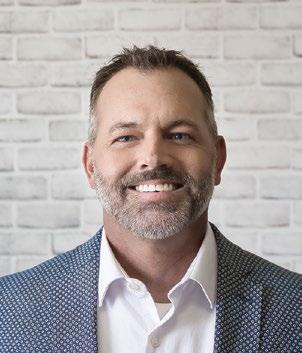
As I navigate the complexities of life, I often think back to that day and the lesson my dad taught me. I strive to be mindful of my surroundings, to appreciate the present, and to find balance in the chaos.
As each of you embark on your own journeys, remember to take a moment to look around, to be present, and to cherish the moments of connection with those you love. Here’s to the adventures that shape us and the lessons that guide us.
All the Best,
All the Best,
Warmest regards,
Brendan Dalley
Editor Brendan Dalley Editor
Brendan Dalley Editor Brendan Dalley Editor

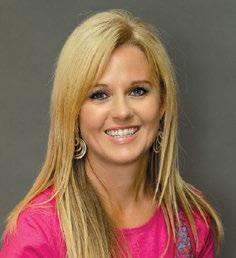
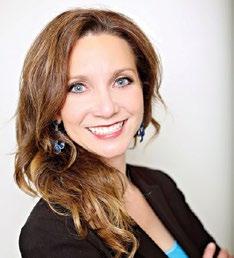
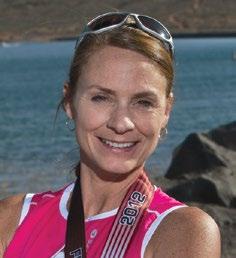

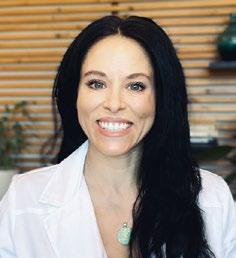
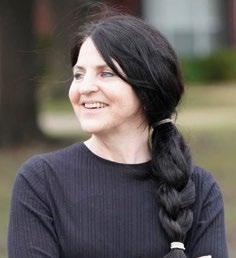




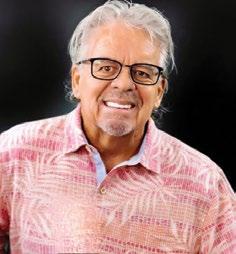

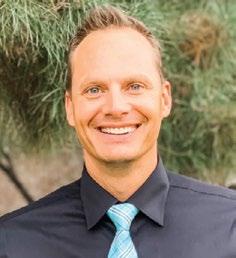










Did you hear the news?

Standard & Poor’s Global Ratings (S&P) recently completed two credit reviews of the City of St. George. We were elated with the results because these new ratings are sure to stretch taxpayer dollars even further.
The City of St. George received a AA+ credit rating on the city’s anticipated $15.2 million (estimated proceeds) general obligation bond issuance for the 2023 Trails, Parks and Recreation General Obligation Bond (G.O. Bond). As part of its evaluation, S&P also reviewed the credit rating the City received on the sales tax bond issued in 2023 for the City Hall project. S&P informed the City it would receive a credit upgrade—to a AAA credit rating—on that issuance.
The AAA credit rating is the best an organization can receive.
This is awesome news for St. George and a clear indicator of our economy and fiduciary strength. It is unprecedented in our history to receive a AAA bond rating, and there are only a handful of similar credit ratings across the state.
“The rating reflects the city’s very strong local economy that has demonstrated continued population and economic growth,” the S&P report stated. “Overall sales tax revenue collections have experienced year-over-year growth, and consumer spending has remained resilient despite increased inflationary pressures. Notably, sales tax revenues did not decline during either the pandemic or the last three fiscal years.”
pressures. Notably, sales tax revenues did not decline during either the pandemic or the last three
It’s great to have the rating, but how does this help us save money? Well, recently, the City of St. George closed on the first tranche of debt issuance for the voter-approved Trails, Parks and Recreation G.O. Bond. The true interest cost was significantly lower than anticipated, saving approximately $400,000 in interest expense over the life of these bonds. Our sacred taxpayer funds will go even further now!
Without the long hours spent on planning, organization, and preparation by members of the City’s Budget and Finance Team, including City staff and elected officials, we would not have been in such a great position to save our taxpayers money. When the voters overwhelmingly approved the G.O. Bond last November, it became our task to not only carry out the projects that the bond funded but to do so in a way that was consistent with our conservative budgeting practices.
We look forward to these projects that will undoubtedly enrich the lives of our residents for years to come— projects made possible by taxpayer funds that are managed impeccably by City staff and elected officials.

Mayor, City of St. George
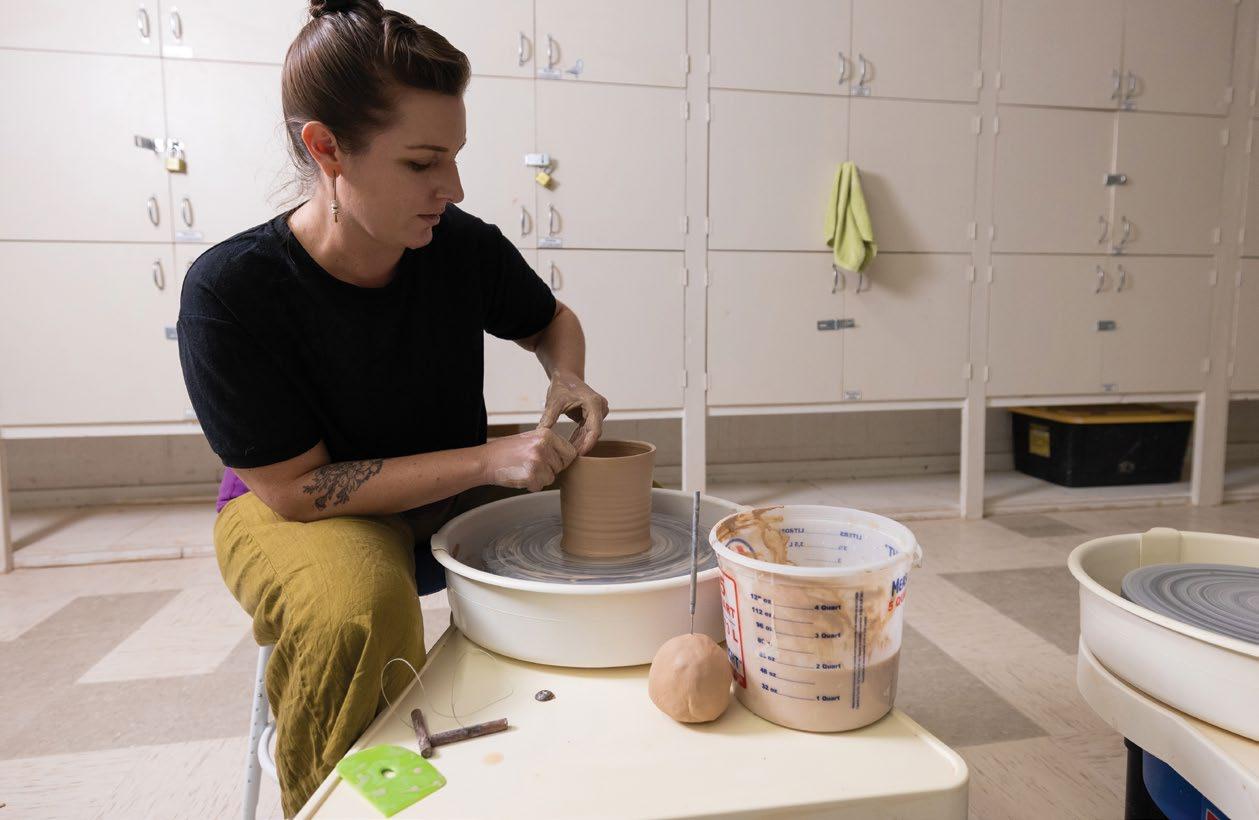

Students of all ages, from kindergarten to college, are preparing for school this fall, and they don’t have to be the only ones expanding their horizons this year. Thanks to noncredit-bearing classes offered through programs like Utah Tech University’s Community Education and Institute for Continued Learning, all community members can be lifelong learners.
Community Education classes are the perfect way to achieve self-improvement goals, acquire new job skills, pick up a new hobby, or socialize with others in the community. In fact, offerings include a variety of enrichment classes on everything from art, photography, and music to foreign languages, health, and motorcycle safety. Plus, classes on new subject matters are added every semester.
A collaboration between Utah Tech University, the City of St. George, and the Washington County School District, Community Education classes are typically held on the Utah Tech campus and offered in the evenings to accommodate busy schedules. Classes are taught by community members who are experts in the field in which they are leading classes.
Visit ce.utahtech.edu to learn more about Community Education and be sure to check back in August, when new classes for the fall will be posted.
Across campus, the university’s Institute for Continued Learning enables community members to take as many ICL classes as they’d like for $75 per semester or $90 for the year. This program features almost eighty classes taught by fellow ICL members, many of whom hold advanced degrees in fields like science, business, and psychology. While the institute attracts a large number of retired and semi-retired individuals, it is open to anyone of any age.
Classes change every semester but range from actively participating in belly dancing, melodrama, and piano to lecturestyle courses on financially planning for retirement, Utah history, and Mark Twain. Other particularly well-liked classes include teachings on local geology and archaeology as well as sessions on colossal engineering failures and the origins and contributions of human nature and nurture in daily life.
More than an opportunity to take classes, ICL is a community of active lifelong learners who also participate in wellness programs, field trips, and social activities together to enhance intellectual and creative growth and physical and mental wellbeing. For example, ICL includes clubs with special interests, such as hiking, skiing, archaeology, and comedy so members can come together regularly for scheduled activities.

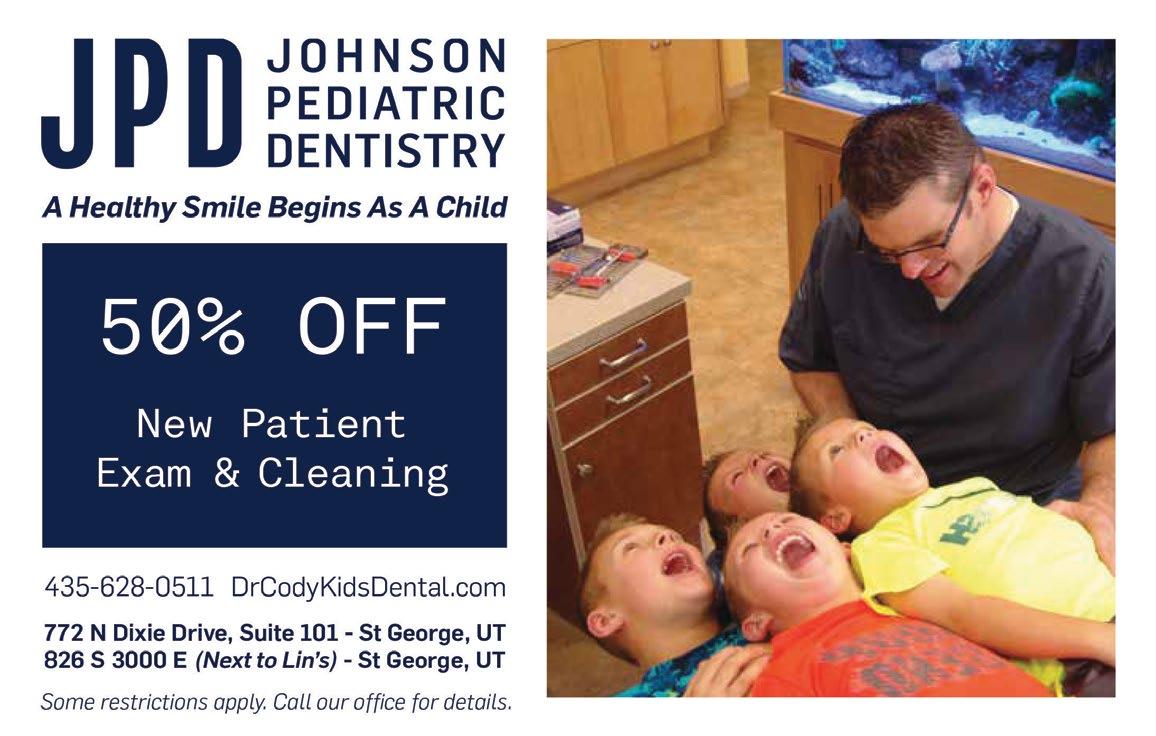


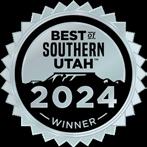



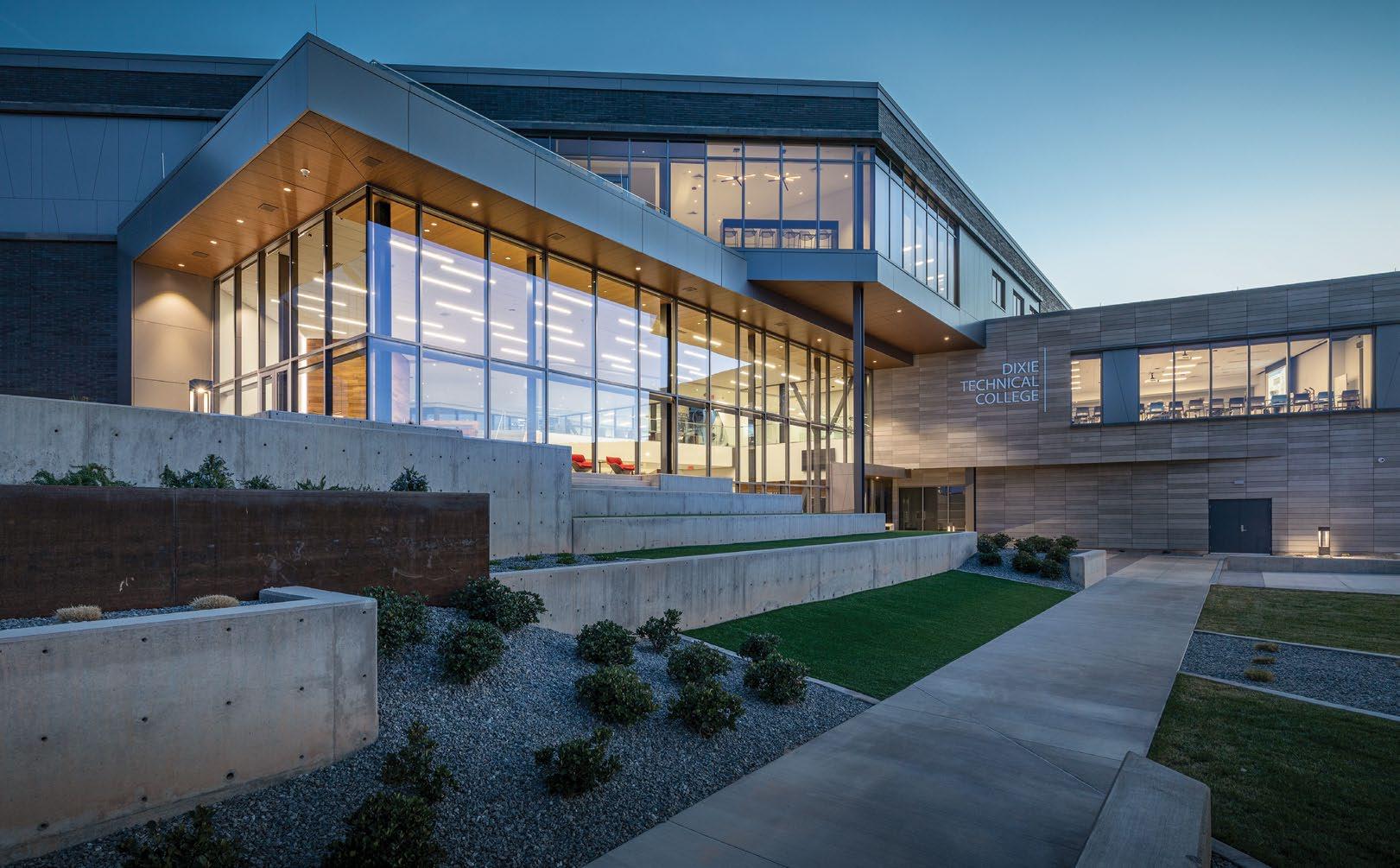



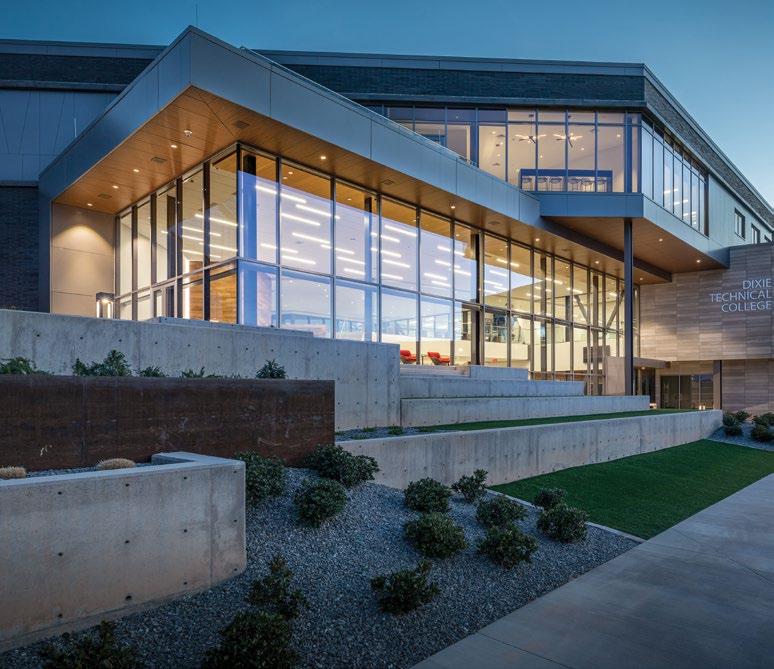
Are you ready to move beyond an entry level job and start a stable, rewarding career? Look no further than Dixie Technical College. With over twenty-five programs that focus on southern Utah’s fastest-growing industries and classes that start year round, the pathways to success are endless.
Dixie Tech collaborates with professionals from each industry to keep our programs growing and adapting alongside the job market. We stay up to date with the latest technologies and innovations from each industry to ensure that we are preparing you for success in the workforce. Instructors train you with the support and hands-on experience needed to grasp the concepts and skills that employers are looking for.
Each of our programs offers a quick and cost-effective way to get into the workforce and a fast-paced curriculum that will provide you with a knowledge base and understanding of the skills necessary for success in your field. Most programs can be finished in under one year, and on average, over 90 percent of our students obtain a job in their field of study or go on to further their education.
Our goal at Dixie Tech is to make our programs accessible to everyone looking for a way to better their lives— whether that means learning the skills for a career change, finding a more fulfilling job, getting training that will help earn a better paycheck, landing a
job that will create stability for the future, having skills to fall back on, or just trying to find the correct career path. Dixie Tech programs train you with the knowledge and hands-on skills you need to make life-changing career choices.
Don’t delay. Take the first step towards your career goals by enrolling in one of our programs today. The sooner you apply, the sooner you’ll be on your way to a fulfilling career. Learn more and start your journey by visiting dixietech.edu.
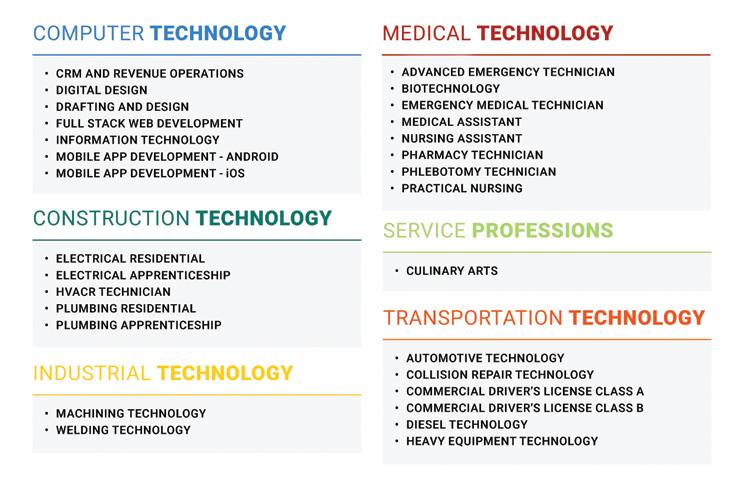
By Diane Del Toro

Southern Utah, with its stunning red rock landscapes, diverse outdoor activities, and rich cultural heritage, is a paradise for those looking to rejuvenate their physical, mental, emotional, and spiritual health. With summer now in full swing, it is the perfect time to craft a summer bucket list to ensure you are making the most of what remains of the season and to nurture all aspects of your well-being before life becomes more scheduled and rigid in the fall.
I have been making a summer bucket list since I was a freshman in college. One of my first accomplishments was hiking Angel’s Landing with my college roommate. We took on this challenge in the late 1970s, a time when Zions National Park was not overrun with visitors, even in the summer. We began our hike very early in the morning and did not pass a single person on our journey to the top. It was magical, especially in comparison to the crowds trekking either way on the trail and the permits that are required when visiting Angel’s Landing today. The narrow path to the top from Scout Lookout, with its sheer dropoffs on either side, was intimidating, but the panoramic view from the top made every step worth it. We sat all alone in the crisp morning air at the top of Angel’s Landing, eating our breakfast and admiring the spectacular view in silence. It was a singular experience.
Since then, a bucket list has become a part of my summer. It is more than just a compilation of fun activities; it’s a roadmap to experiencing joy, personal growth, and a sense of accomplishment. Here is why crafting and completing a summer bucket list can be
one of the most fun and fulfilling endeavors you embark on this season and every summer season in the future.
The first thrill of a summer bucket list comes with the planning. Sit down with a notebook or a digital planner and brainstorm activities you’ve always wanted to try. Whether it’s hiking a scenic trail, learning to wakeboard, or hosting a themed picnic, the anticipation of future adventures can be just as exciting as the experiences themselves. This planning phase is a chance to dream big and think about what would truly give you a sense of accomplishment, but remember to keep in mind any time restraints in your personal schedule so that you can avoid overplanning or creating a bucket list that is much too long.
A well-crafted bucket list includes a mix of activities that cater to different interests and moods. From physical challenges like rock climbing to creative pursuits like painting a landscape, your list can cover a broad spectrum of fulfilling projects and endeavors. This variety ensures that you always have something new to look forward to. It’s also a great way to step out of your comfort zone and try things you might not normally consider. You can create a well-rounded bucket list by taking into account activities that would fall under the following headings: physical, mental, emotional, and spiritual.
Many bucket list activities are perfect for sharing with friends

and family. Inviting loved ones to join you on your adventures adds another layer of enjoyment. Whether it’s a road trip to a new destination, a lake day, or a night camping in nearby state or national parks, these shared experiences become cherished memories. The laughter, camaraderie, and shared sense of accomplishment from completing these activities together are invaluable.
There’s a unique satisfaction in checking items off your bucket list. Each completed activity gives a sense of achievement and progress, which can boost your confidence and motivate you to keep pursuing your goals, both big and small. It’s a tangible way to see how you’re spending your time and making the most of your summer.
While it’s fun to plan, some of the best moments come from unexpected detours and spontaneous decisions. A summer bucket list shouldn’t be rigid; it’s a flexible guide that allows for impromptu adventures. Embracing the unexpected often leads to the most memorable and enjoyable experiences.
Working through your summer bucket list is more than just ticking off activities; it’s about having new experiences, creating memories that will last a lifetime, enjoying new accomplishments, and feeling a sense of personal growth. So grab your pen, jot down your summer dreams, and get ready for an unforgettable journey of fun and fulfillment.
Zion offers trails for all levels, from the gentle Riverside Walk to the challenging Angel’s Landing. Hike to the Emerald Pools for a refreshing sight or tackle the Narrows for a unique water hike.
Known as a mountain biking mecca, Moab boasts trails like Slickrock and the Whole Enchilada. Enjoy the adrenaline rush and spectacular views that come with these rides.
Explore the countless canyons and secluded beaches of Lake Powell by kayak. This activity not only provides a good workout but also an intimate experience with nature.
There are many areas in and around Bryce Canyon that provide terrific climbing experiences for climbers of all experience levels. You can find various climbing guides online, or speak to local professionals and park officials once you arrive.
For those who love running, the rugged trails of Canyonlands offer a unique experience. The Needles District, with its diverse terrain, is particularly popular among trail runners. It is strongly recommended that you use a map to reach the Needles; GPS guides frequently lead people astray.


continued from page 15
Star Gaze in Capitol Reef National Park
Capitol Reef is an International Dark Sky Park, making it perfect for stargazing. The clear night sky provides a stunning display of constellations, perfect for a peaceful evening.
Photograph Arches National Park
With over 2,000 natural stone arches, this park is a photographer’s dream. Spend time capturing the beauty of these formations and the unique desert landscape.
Attend a Local Workshop or Class
Utah Tech University offers many community education classes and certificate courses in a variety of interest areas. Check them out at ce.utahtech.edu.
Bird Watch at Fishlake National Forest
This forest is home to a variety of bird species. Bring your binoculars and enjoy the meditative practice of observing these creatures in their natural habitat.
Read in a Scenic Spot
Find a quiet place in the shade, and immerse yourself in a good book. The serene environment enhances the joy of reading. You might even try visiting the Virgin Canyon Recreation Area, located off the Cedar Pockets exit in the Virgin River Gorge, to find a quiet spot for reading. Go to www.blm.gov/visit/virgin-rivercanyon-recreation-area for more information.
Yoga in Snow Canyon State Park
Practice yoga amidst the stunning red rock scenery of Snow Canyon. The tranquility of the park enhances the emotional benefits of yoga. Horseback Ride in Dixie National Forest
Explore the trails of Dixie National Forest on horseback. The connection with your horse and the surrounding nature can be incredibly soothing.
Hot Air Balloon Ride over the Valley
Experience the beauty of southern Utah from a different perspective with a hot air balloon ride. The breathtaking views can lift your spirits and provide a sense of freedom.
Engage with the local community by attending a summer festival or fair. Enjoy the music, food, and festivities that bring people together. Attend one of the many plays or musical performances in the area; you’ll be amazed at the quality and diversity of the offerings. To find out what is going on in the southern Utah community, visit the Greater Zion website at greaterzion.com.
The serene and secluded Kolob Canyons in Zion National Park offer a perfect place for meditation. The tranquility helps in connecting with your inner self.
Reflect on the lives of the ancient inhabitants of this land by visiting the petroglyphs. These ancient carvings provide a deep sense of history and spirituality.
Witnessing the sunrise at Mesa Arch is a spiritual experience. The way the light illuminates the landscape can inspire a profound sense of awe and connection.
Walking through the narrow, winding slot canyons can be a metaphor for life’s journey. The beauty and mystery of these formations offer a unique spiritual experience.
Spend a day in silence in the desert. This can be a powerful way to connect with your inner thoughts and find peace.
1. Bring plenty of water and stay hydrated, especially during outdoor activities in the summer heat.
2. Wear comfortable clothing appropriate for the activity and weather conditions.
3. Plan ahead by checking opening hours and event schedules to make the most of your visit.
By the Washington County Board of Realtors®

The topic of Artificial Intelligence can be exciting and a bit nervewracking at the same time—and it usually just depends on who you ask. No matter the camp you’re in, it’s important to be aware of how these advancements in technology can affect your dayto-day life, especially when it comes to major financial decisions, and real estate is at the top of the list.
With access to advanced tools, cybercriminals have become more sophisticated in their attacks. Security provider SlashNext reported that more than 255 million attacks took place through link-based URLs and email messages as well as through mobile and internet browsing pages last year. This is a huge increase from the previous year, and it’s one of many reasons to be alert and careful when it comes time to buy or sell a home or property.
While scams are getting harder to identify, many homeowners are unpleasantly surprised to find numerous pitfalls associated with the real estate process. With little to no experience in real estate and facing scams like wire fraud and contractor and moving schemes, potential buyers and sellers are seeking the protection and professional guidance of an experienced REALTOR®.
Other common pitfalls associated with real estate can include liability, title fraud, deceptive contracts, and even land scams. Fraud has been an increasing obstacle for many buyers and sellers who attempt real estate transactions without the help of a REALTOR®. Even young home buyers who are not digitally naïve find themselves susceptible to missing major red flags when they are not familiar with the nuances of the closing process. Thousands of buyers are tricked into wiring down payments and closing costs to escrow accounts controlled by cybercriminals who have utilized sophisticated phishing techniques. Buyers and
sellers, both new and experienced, need to protect themselves with help of a REALTOR® to support and oversee this process.
One in ten Americans falls victim to contractor scams, costing individuals an average of $2500—often much more. These scams can include low quality work without contracts, low-cost estimates that are followed by exponential costs, and subpar work. Washington County has no shortage of excellent contractors, and experienced REALTORS® rely on their professional network to connect their buyers and sellers with trusted contractors from their book of business. These vetted contractors provide proof of permit, licensing, insurance, and professional contracts.
The purchase or sale of real estate is one of the biggest financial investments and transactions that an individual will make, and sometimes the services of a REALTOR® are overlooked for the purpose of saving a bit of money. But when it comes to protecting clients and avoiding potentially devastating pitfalls, it’s clear that a REALTOR® is not an expense but rather an investment. Ensure the safety and success of your real estate journey and partner with a professional to provide that security and guidance throughout the entire process.

By Marianne Hamilton
Trish Schlegel was never particularly athletic. And she’d be the first to say that throughout her life, she lacked any iota of selfconfidence. But with a “milestone” birthday approaching, she decided to do something completely out of character.
Thus, on March 23, 2024, after donning a sparkly, skimpy bikini and a pair of stiletto heels, getting a spray tan, and having her makeup done, she joined a coterie of bodybuilding contestants on a stage in Las Vegas—at the age of seventy.
Schlegel’s participation in the competition was the culmination of an intense—often downright grueling—year-long training regimen. An exercise fan for the past dozen years, she’d been a devotee of the workouts at Orangetheory Fitness in Denver, where she and her husband Robert lived prior to their move to St. George, Utah. “When we decided to relocate, I told Robert that my one requirement was that we had to move where there was an Orangetheory gym,” Schlegel said, laughing. “I love to work out! It makes me feel so good mentally; the physical part is just icing on the cake.”
Though Schlegel’s workouts kept her tiny four-foot, nine-inch frame in tip-top shape, she suffered from a chronic hip injury. Additionally, a DEXA scan after her move to Utah revealed osteopenia, often a precursor to osteoporosis, and both extremely common in small-framed, postmenopausal Caucasian women. Schlegel’s research into possible solutions revealed that weight training was an excellent way to offset the progress of bone loss.

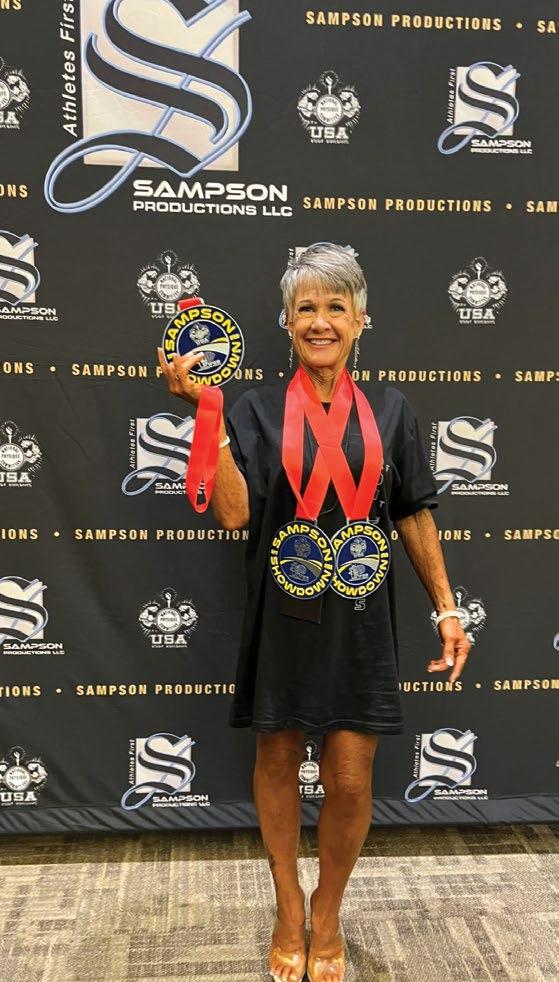
Her quest for a coach brought her into contact with Kenzi and Denim Ferguson, the husband-and-wife proprietors of Iron Titans Fitness on Dixie Drive. Both bodybuilders as well as personal trainers, they were eager to coach Schlegel. In short order, Kenzi was encouraging Schlegel to consider competing in an upcoming competition, a notion Schlegel immediately rejected as ludicrous on multiple levels.
“I said, ‘I’m too old to go out on a stage half-naked…No one wants to see a seventy-year-old body up there!’” Schlegel noted, laughing even harder. “Plus, I had zero self-confidence; none. Then two other girls started training with me, and both of them kept telling me I could do this. After a while, I finally said, ‘Okay, I’ll do it.’”
In the spring of 2023, Kenzi started Schlegel on her road to the Vegas stage. First on the agenda: tracking Schlegel’s macronutrients, or “macros.” According to Prevention magazine, this strategy forms the diet of choice for serious athletes hoping to optimize their performance. It ensures the consumption of nutrient-dense foods while specifying the ideal percentages of protein, carbohydrates, and fats in every meal. Though the macro diet provides positive results quickly, it requires considerable commitment.
Said Schlegel: “I was very faithful to it, but it drove Robert absolutely insane. On Sundays, Kenzi would send me the week’s meal plan, and I’d do the prepping and weighing. It was a process, but once I got the hang of it, it kind of became second nature.”
Added her mate: “Trish was weighing everything, down to a fraction of an ounce. I have to admit, I did get really tired of hearing the words ‘carbs’ and ‘protein.’” When asked if he adhered to the same dietary restrictions, Robert—a Vietnam vet who served in the Navy and prefers sturdier fare—burst into laughter of his own. “We’d only been married for ten years when Trish decided to do this. Since I’d been single most of my life, being on my own for food was basically like going back to the way things used to be.”
Eventually, Schlegel’s weight shrank from 113 to 90 pounds, even as she was adding top-to-toe muscle definition. With a steadily decreasing amount of carbs in the weeks leading up to the competition (and almost none in the last two weeks, despite the intense weight training), Schlegel admits that she often felt physically and emotionally drained. “I was depleted,” she confirmed. “I needed the protein to build the muscle, but without the carbs, it was really hard to lift what I used to. Honestly, I was so tired…and always hungry.”
Still, by the time the show began at Southern College of Nevada, Schlegel felt she was flex-ready. The judges agreed, awarding her medals in each of the three categories she’d entered. When her age was announced, she also received a standing ovation as well as a request for a selfie from retired professional bodybuilder Flex Wheeler, who asked permission to post the photos of Schlegel he’d snapped during the competition. Wheeler knows talent when he sees it: Arnold Schwarzenegger dubbed him “one of the greatest bodybuilders” he’d ever seen.
Since then, Schlegel has continued her workouts and (mostly) her meal plan, with an eye toward possibly taking the stage again next year. Though she never imagined herself in the spotlight—let alone bikiniclad with rippling muscles—she believes the experience was a very positive one.
“It was a battle with myself throughout the whole process, but competing totally changed me; it did everything I hoped it would do,” she said. “When you’re done, what you’re left with is ‘Yeah; I want to do it again because it feels so good.’ How I feel about myself now is…amazing.”

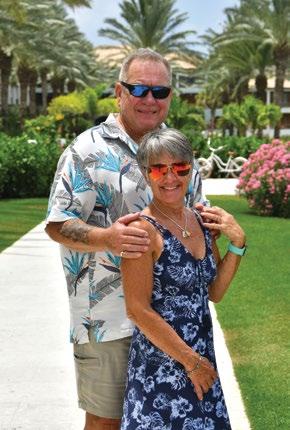
Marianne L. Hamilton is a veteran journalist and marketing writer whose work appears in regional and national publications. When not race walking or teaching water aerobics, she serves on the board of the Art Around the Corner Foundation. She and her husband, Doug, are also co-administrators of the St. George Wine Club, founders and co-directors of the United States Power Walking Association, and race directors for the Huntsman World Senior Games. Marianne was crowned Ms. Senior Universe 2022-2023 and is executive director of the Senior Pageants Group. A proud breast cancer survivor, she is a member of the Intermountain Healthcare Oncology Patient-Family Advisory Council.

By Tiffany K. Gust, MS, CPT
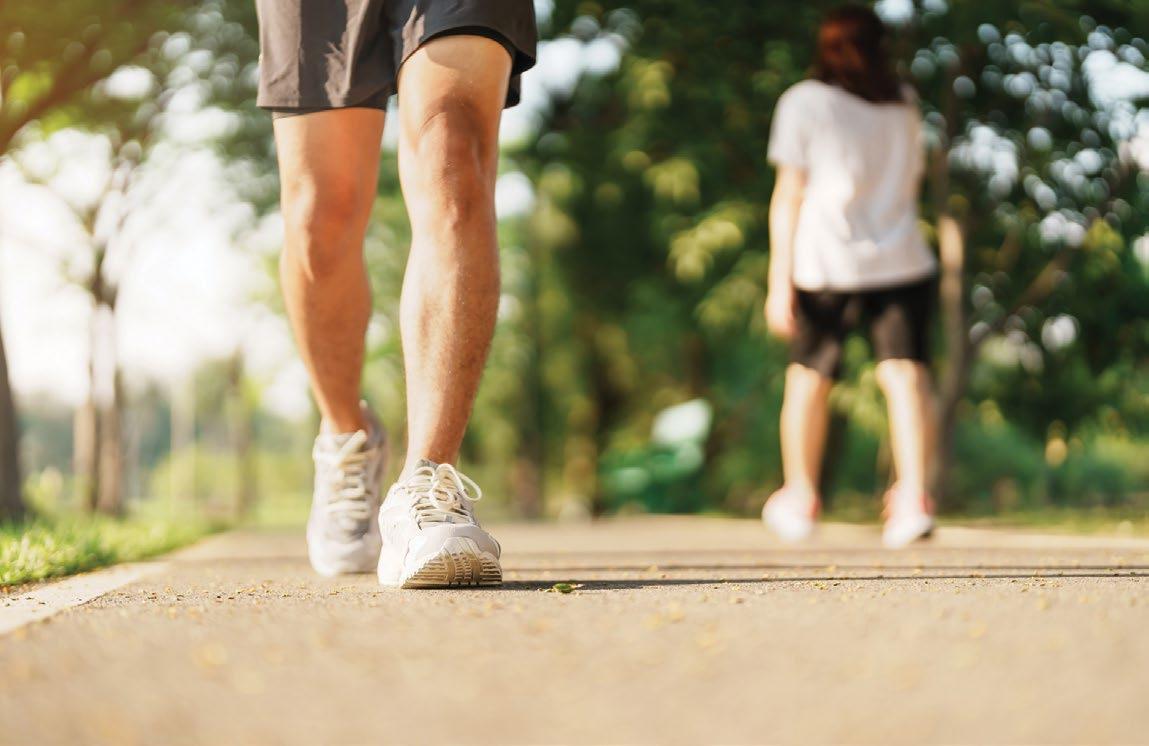
Walking is a great way to improve or maintain overall health, and it provides countless benefits, including the prevention and/or management of diabetes, inflammation, peripheral artery disease, colon cancer, depression, vascular stiffness, high blood pressure, mental stress, obesity, high cholesterol, and dementia. Physical activity does not have to be vigorous or done for long periods of time to be beneficial.
How fast you walk makes a difference in the overall health benefits walking provides, and some research suggests that walking becomes more beneficial to health as a person ages. In one study, the University of Sydney found the protective effects of the walking pace were more pronounced in older age groups. For instance, they found that a walker who was sixty years of age or older who walked at an average pace experienced a 46 percent reduction in the risk of death from cardiovascular disease, and those who walked at a fast pace saw a 53 percent reduction. Walking pace or gait speed can be a valuable fitness assessment tool and provide a pre-injury baseline.
A forty-year research study published in the Journal of the American Medical Association (JAMA), found that lifelong walking speed may have a direct link to overall health and cognitive function.
Power Walking
This is a progression of walking steps, heel to toe, taken so the walker contacts the ground with no visible (to the human eye) loss of contact. The advancing leg can be bent as it passes under
the body. You can compete in this event at the Huntsman World Senior Games.
Race Walking
The type of walking has technical requirements and can be competitive in nature. Huntsman World Senior Games, held in St. George, Utah, is one example.
Brisk Walking
This gait speed is used to intentionally get you from point A to point B. It is the speed you would walk if you were late for a meeting or have a predetermined duration and distance to cover.
Marathon Walking
The goal is 26.2 miles for a marathon and 13.2 miles for a half marathon. This speed is typically used for those who might want to complete the distance as a beginner or for an expert athlete who is taking a step back from running due to injury or preference.
This is a wonderful way to get in your 10,000 step count each day. This can be social and provide a lifetime of fitness.
According to Emmanuel Stamatakis, a researcher from the University of Sydney’s Charles Perkins Center and School of Public Health, a fast pace is generally five to seven kilometers per hour. “It really depends on a walker’s fitness level,” he explained. “An alternative indicator is to walk at a pace that makes you slightly out of breath or sweaty when sustained.”
Get an idea of how fast you are currently walking by using a stopwatch or walking app. Increase your speed gradually using intervals of ten to sixty seconds as tolerated. You can time yourself doing a task, such as walking to the mailbox or to the end of the street, and then try to beat your time.
• A speed of 1.8 mph is the median walking pace for someone sixty-five years of age or older.
• A speed of 2.2 mph suggests healthier aging.
• A walking speed of 2.7 mph indicates an exceptional life expectancy.
• Seniors who walked fifteen minutes a day (ninety minutes a week) for over eight years enjoyed a 14 percent lower death rate than their inactive counterparts.
• Walking speed is an authentic vital sign, so work your way up to a more energetic pace.
“A highly fit athlete may require a high frequency of exercise throughout the week, at high intensity, and for longer sessions to improve cardiorespiratory fitness,” said Justin Lang, an associate researcher with the Healthy Active Living and Obesity research group. “Someone just starting out might benefit from a brisk walk at low intensity for twenty to thirty minutes a few times a week.”
This exercise builds power in your core to help you whip the club through the ball.
1. Facing the cable machine, kneel with either leg forward.
The important thing to consider when embarking on a physical activity journey is that something is better than nothing. Do not compare yourself to others but start where you are. Set small goals each week, and break your walking into smaller chunks of time as needed. Find an “accountability buddy” to keep you on track with your goals. Show up for yourself by stepping into action, lacing up those shoes, and embracing the incredible benefits of walking.
2. Grab the cable machine with both hands. To start, choose a lighter weight than you might think.
3. Quickly twist to the side of your lead leg. If your right leg is forward, twist towards the right. The quick movement makes it more of a power movement, mimicking your golf swing.
4. Repeat with the other leg forward.
5. Perform four sets of fourteen repetitions on each side.
This exercise builds core and back strength, which leads to a stronger drive. It teaches your core to stabilize when you move your upper body. This is a critical skill when maintaining a precise swing.
1. Lie on your side facing the cable machine or anchor point for the tubing.
2. Grab the handle at the appropriate weight or resistance and rise up into a side plank. Make sure that your shoulder is in line with your elbow.
3. Perform cable rows while staying in a full side plank position.
4. Perform three sets of twelve repetitions on each side.
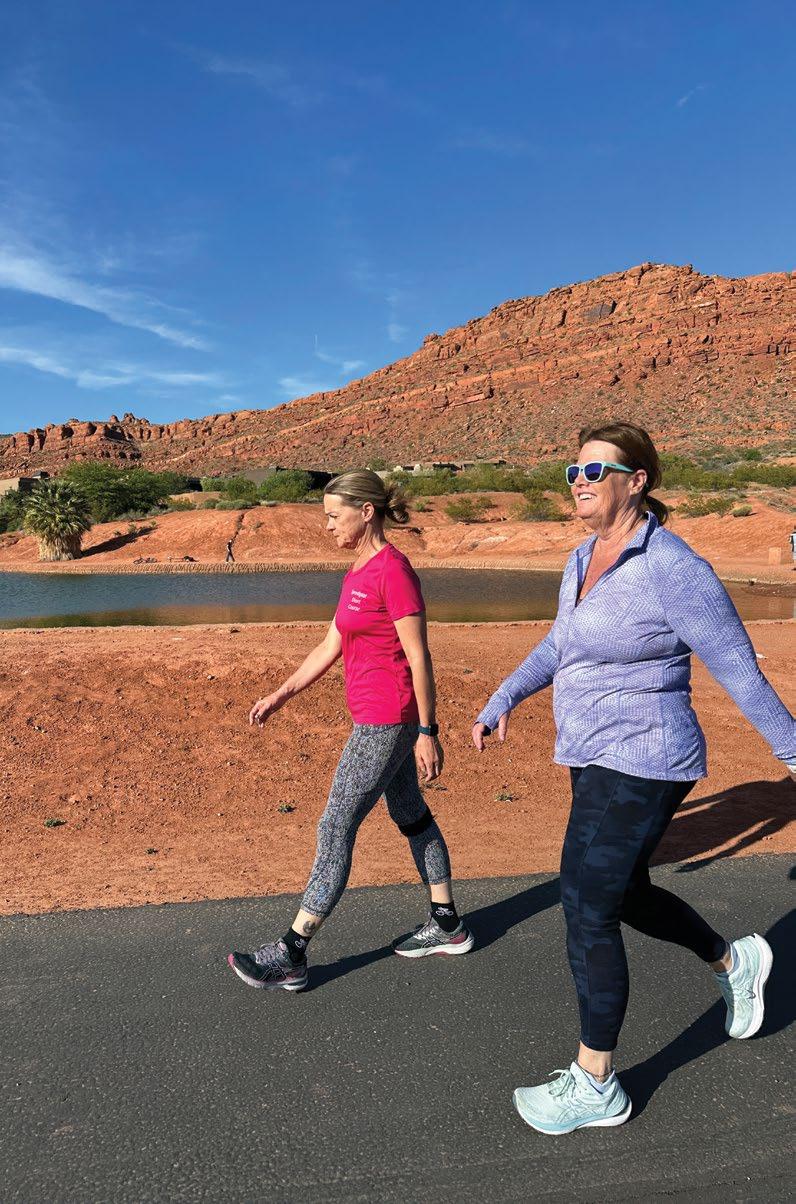
By performing this twist on a stability ball, you improve your rotational strength and core. This is key in preventing lower back injuries.
1. Lie on your back on a stability ball and hold the medicine ball in both hands with your elbows straight.
2. Slowly twist to one side while balancing on the ball.
3. Brace your abdominal muscles.
4. Perform three sets of ten to fifteen repetitions on each side.
These are advanced movements. However, if you would like to learn more, you can contact Intermountain Sports Performance to schedule an appointment with a qualified exercise physiologist. We will collaborate with you to ensure safety and enhance your golf sports performance. Email tiffany.gust@imail.org or call (435) 251-3733.

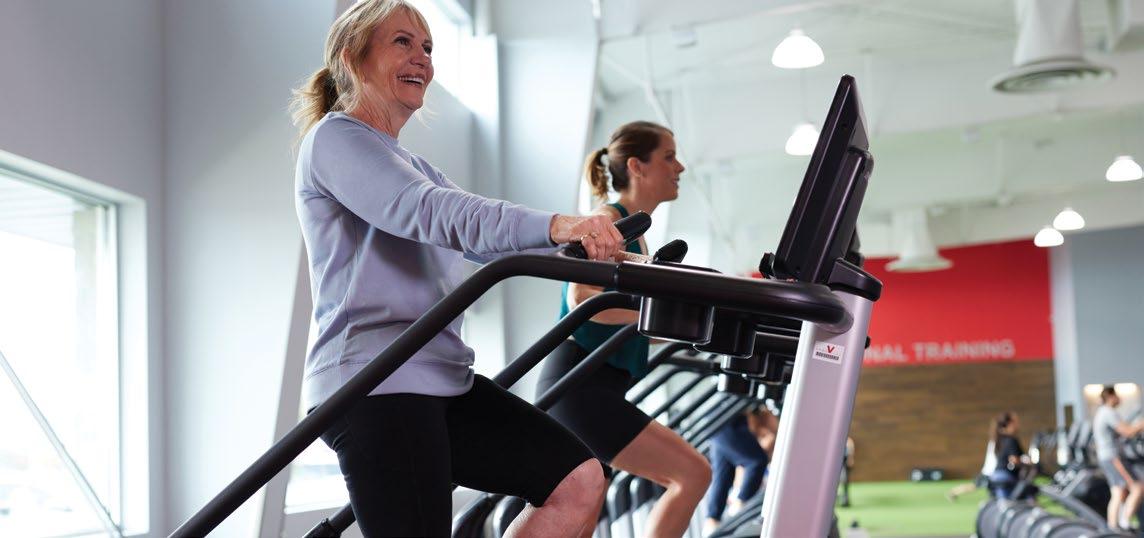

By Gini Grimsley, Director of Fitness Product, VASA Fitness
Many seniors experience anxiety and depression at rates as high or higher than their younger counterparts. Almost a quarter of women over the age of sixty are taking anti-anxiety medications, which are usually paired with other medications for coexisting issues. However, seniors have a kind of cure that helps manage the most common mental health issues they face: exercise. Research suggests that exercise not only improves the body, it also can improve emotional health as well.
Those seniors who have been living a sedentary life may become alarmed at the thought of starting an exercise routine.
Exercise is not meant to scare you; it is a reminder that it is one of the best treatments for many ailments, including mental health issues. A higher quality of life is directly tied to your sense of wellbeing, especially as you age. After fifty, you may notice a downward trend in physical and cognitive function in yourself and others. Studies have shown that exercise is beneficial for reducing fatigue and improving alertness and concentration in addition to enhancing overall brain function.
Exercise increases blood flow, improves muscle function, and encourages the release of important hormones in the body. These hormones form the DOSE response:
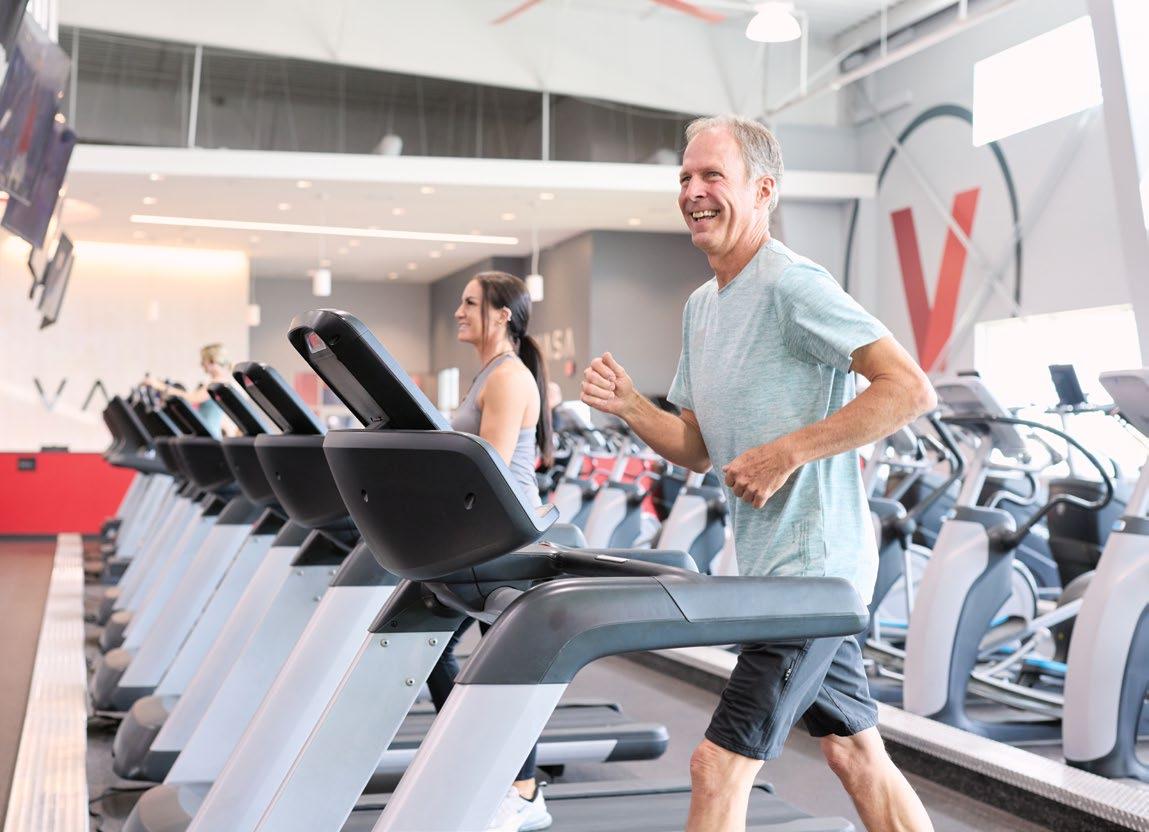
• Dopamine: Regulates mood and motivation
• Oxytocin: Involved in social bonding and stress reduction
• Serotonin: Enhances mood, appetite, and sleep
• Endorphins: Act as natural painkillers and create a “runner’s high”
After engaging in exercise that elevates the heart rate (typically 120 to 140 beats per minute for older adults), these hormones are released into the bloodstream. Regular exercise can act as an effective complementary measure to traditional treatments, potentially reducing the need for medications (under your doctor’s supervision, of course). As little as five minutes of exercise can start this mood-boosting process.
The most beneficial types of exercises for improving mood and physical function are a combination of strength training and steady-state cardiovascular training.
Maintaining muscle mass and high levels of stamina can also help mitigate some of the effects of cognitive decline, allowing for easier independent living.
Below is a simple yet effective weekly exercise program for managing mental health and improving physical fitness. Notice that this is not a complicated routine; simple is more effective and easier to fit into a busy lifestyle.
• Monday: Do thirty to sixty minutes of walking or cycling at a brisk pace.
• Tuesday: Do thirty to forty-five minutes of full-body strength training.
• Wednesday: Rest or walk outside.
• Thursday: Do thirty to forty-five minutes of full-body strength training.
• Friday: Do thirty to sixty minutes of walking or cycling at a brisk pace.
• Saturday: Do thirty to forty-five minutes of full-body strength training or an activity with family and friends.
• Sunday: Rest; you’ve been active. Take time to do a few things around the house, drink lots of water, and prepare for another week of activity.
Remember to invest time and energy a few days each week in exercise. A strong body leads to a strong mind for a lifetime. Always consult your physician before starting an exercise routine. Your doctor can monitor your medication doses for your mental health as well as other medications for conditions like blood pressure and blood sugar.
About the Author
Gini Grimsley is the Director of Fitness Product for VASA Fitness where she creates cutting-edge fitness programming for VASA’s clubs across eight states.


By Lori Wright, CEO, Family Healthcare
There are few places in the world that top southern Utah for geographic beauty and access to the great outdoors. Hiking, biking, and mountaineering offer unique opportunities to be “at one” with nature and away from high-traffic areas. For those with stories of exciting backcountry experiences, there is humility in understanding the associated risks of exploring a remote environment while dealing with an unexpected health condition or injury. Dehydration, hypothermia, broken and dislocated bones, cuts, and scrapes top the list of issues treated by healthcare providers. There are practices that outdoor enthusiasts follow to maintain a high level of safety while ensuring a fantastic time. Here is a basic list of best practices:
• Check for inclement weather before heading out.
• Let someone know your plan, including expected start and finish times.
• Carry a printed map as well as a navigation device that supports an SOS call.
• Observe trail signs and be alert to warnings.
• Stay hydrated by carrying an adequate supply of drinking water.

• Have nuts or protein bars on hand to provide extra energy when needed.
• Pack a first-aid kit with injury treatment essentials; include a headlamp and an emergency space blanket.
• Dress like an onion; remove layers before losing energy and moisture to overheating, and add layers to prevent hypothermia.
• Carry easily accessible identification and emergency contact information for emergency healthcare providers.
Since October 2023, visitors to Zion National Park have received medical care for non-life-threatening injuries and primary health care needs at the Family Healthcare Zion Canyon Clinic located at 120 Lion Boulevard in Springdale, Utah. During high season, the clinic is open Monday thru Friday from 8:00 a.m. to 5:00 p.m. Visit familyhc.org or call 435-986-2565 for more information.
*If you are planning an outdoor adventure in Zion National Park, please take note that the National Park Service has issued a warning about the presence of cyanobacteria in the Virgin River. While the water in the river looks clean and fresh, it’s not safe for drinking (filtered or unfiltered) or swimming.
Lori Wright is the CEO of Family Healthcare. With more than twenty-seven years of experience in community health, she is passionate about developing equity, where everyone can access high-quality integrated primary health care. Family Healthcare’s mission is Making Lives Better, and as CEO, Lori’s efforts are focused on improving the overall health of the patients and the communities Family Healthcare serves.
Lori serves on a variety of committees across the state and throughout Washington and Iron Counties. She is a member of the St. George Area Chamber Board of Governors, Zions Bank Southwestern Advisory Board, and Association of Community Health Centers Board. She also serves on the AUCH Health Center Control Network and is a member of Castell’s Clinically Integrated Committee. Lori has completed a BS in Community/Public Health and holds a Master of Public Administration from Brigham Young University, Marriott School of Management.
Welcoming
Walk-In and same-day care
Integrated
Welcoming new patients
Treatment of illness, injury, and chronic conditions
Women’s
Integrated medical, behavioral, dental & vision care
Walk-In
Sliding scale fees based on income and family size
Discount
Discount drive-thru pharmacy*
Sliding scale
Compassionate,
Compassionate, experienced providers
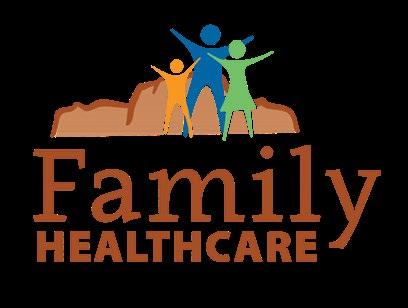

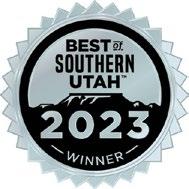
• Donate online at familyhc.org/give
• Scan the QR code
• Mail your donation to 276 E. Riverside Drive, St. George, UT 84770
• Volunteer by calling 435-986-2565
Your all members, regardless of their circumstances, can access the primary they need fear of turned Give community health today!
Donations are
Donations tax-deductible
under section 501 (c)(3) of the IRS code. Tax ID #35-2163112


By Coleen M. Andruss, MD
Women statistically have higher rates of obesity than men, and women living in poverty and certain ethnic and racial minorities are typically more severely affected. According to the Centers for Disease Control, 33.5 percent of women over the age of eighteen are obese, 26.5 percent have high blood pressure, and 15 percent are in poor health. Healthcare costs are 31 percent higher for obese women compared to obese men who are the same age. Obesity is a disease. Unfortunately, while women experience obesity in higher percentages than men, they also experience more weight bias and stigmatization in all areas of life.
There are physiologic, socioeconomic, and societal factors that influence the development, progression, and persistence of obesity in women. These include menstrual cycles, pregnancy and childbirth, menopause, stress and trauma, a higher incidence of mental illnesses, pay disparities, poverty, food insecurities, educational differences, the overfocus on women’s bodies, weight bias and stigmatization, gender disparities, racial disparities, social media, and sexual abuse. While some of these factors are not treatable in the clinical setting, it is important to understand what is treatable.
Menopause—the cessation of menstrual periods and the disappearance of ovarian hormones—is non-pathological and is a normal part of a woman’s life, but it doesn’t have to be miserable. Since the average age of menopause is about fifty-one years of age, women spend more than 40 percent of their lives in menopause. But perimenopause, the “time of change,” the gradual altering of hormone levels in the bloodstream as a woman transitions into menopause, starts to occur when a woman is in her mid forties. There is disruption in the normal cyclical pattern of estrogen and progesterone. It is important to realize the implications of perimenopause and menopause beyond just the hot flashes, night sweats, and insomnia.
It is a fact that over 75 percent of women will gain an average of five to seven pounds over the three to five year transition period into menopause. Sometimes, they gain even more, and this is due to a true physiologic change in hormonal health. This weight gain is in addition to what a woman’s normal aging process already does to her metabolism. As women lose muscle mass with aging, without gaining even a pound of fat, a woman’s body fat proportionally goes up and the distribution of fat goes toward the middle. Menopausal gain adds to this, and because it is hormonal, it is specifically abdominal fat mass.
Those who start into perimenopause with lower body fat typically gain more than those who start with higher body fat. Estrogen has been shown to have an inhibitory effect on appetite, so as levels decline, appetite increases. Estrogen and estrogen receptors regulate various aspects of glucose and lipid metabolism as well as other metabolic parameters. As hormones decline, this disturbance in metabolic regulation leads to body composition changes defined as central visceral belly fat, which then leads to insulin resistance, increasing the risk of metabolic syndrome and cardiovascular disease two to four times compared to that of premenopausal women. Carbohydrate digestion and utilization also decline, leading to an increased risk of type 2 diabetes. The LDL (bad cholesterol) generally increases and the HDL (good cholesterol) decreases, and there are higher incidences of high blood pressure, stroke, and heart attack.
The increased central fat in menopausal women increases mortality from all causes, including breast cancer and coronary artery disease. The physiology behind this automatic menopausal belly fat gain is that the declining estrogen levels alter the effectiveness of leptin and ghrelin, which are hormones that regulate hunger, satiety, food intake, and energy expenditure.
Other manifestations of hormonal imbalance include chin hair, acne, rectocele, cystocele, incontinence, recurrent urinary tract infections, insomnia, poor sex drive, vaginal dryness, irritability, and osteoporosis (bone loss). Studies show that women who have a fracture due to osteoporosis have an increased mortality rate of 26 percent in the first five years after the fracture.
Since menopause is inevitable, what can women do to prevent misery for this large time span of their lives? There is a lot of controversy over whether a woman should be on hormones or not because of the increased risk of breast, uterine, and ovarian cancers. It becomes a choice, and a woman must weigh the risk and benefit. A decision should not be made until an educated decision can be made.
Besides hormone therapy, women need to stay active to build good bones, be outside to get good levels of vitamin D, get good sleep to counteract some of the hormonal effects of disease, and eat healthy. Dairy products contain essential bone-health vitamins and minerals. Healthy fats (omega-3 fatty acids) found in salmon, anchovies, flaxseed, chia seeds, and hemp seeds have demonstrated improved cardiovascular health. Studies show that women who eat more vegetables, fruits, and unprocessed foods have less severe menopausal symptoms. Although controversial, phytoestrogens such as soybeans, chickpeas, peanuts, flaxseed, and barley contain natural estrogens, and most research suggests they benefit the bones and heart. Because of the loss of muscle
mass, menopausal women need more protein, such as eggs, meat, fish, legumes, and dairy, as well as protein powders and collagen. Women, don’t spend the last years of your lives in misery. Take care of yourselves, be aware of what you can do, seek help professionally if needed, and grow older gracefully with good health and a happy mind!
Dr. Coleen Andruss practiced as an internist for ten years and has specialized in weight management for twenty-nine years. She and her staff have personally experienced weight management issues and have a compassionate understanding of patients in the Healthy Lifestyles program. Dr. Andruss’s internal medicine background helps her to see underlying medical problems when formulating individual plans that work.



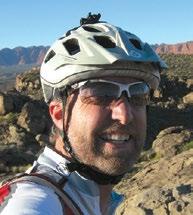
About the Author Mountain bike veteran, amateur filmmaker, and lover of long rides, Jay Bartlett has been riding trails in Southern Utah for over thirty years. Jay has over a decade of experience as a bike mechanic at St. George’s oldest bike shop, Bicycles Unlimited.
A gusting, forty-mile an hour wind swept up through Kershaw-Ryan State Park. Its only escape from the box canyon was up and over the 700-foot cliffs that the Redemption Trail runs atop—close to the edge. And there I was, riding all too knowingly towards a freight train of wind that I had no choice but to get in front of.
The day had started off well enough at the Broken Record Six-Hour Mountain Bike Challenge in Caliente, Nevada. My first four and a half laps went off great. I was running my pace and eating right. Happily, the wind was nothing more than a pleasant breeze, but everyone had seen the ominous forecast of high winds and was waiting anxiously for the hammer to drop. When the wind did come, it blew in fast and strong—and stayed. In the pits, canopies were hastily taken down, and chairs, tables, and small children were battened down.



By Jay Bartlett

Out on course, the riders were bustled and pushed about, becoming hyperaware of just how narrow an eighteen-inch wide singletrack really is when the gusts are trying to push you into the brush and rocks that line the trail. In some ways though, the riders had it better than the pit crews; whereas the pits sat on top of a ridge and had constant wind, the riders, at times, would be behind hills that blocked most of the gale.
I was, however, not behind a hill but quite near the cliff as that forty-mile an hour gust topped out of the canyon, and that’s when I could no longer “ride between the lines” of the singletrack. I ended up being shoved into a string of rocks lining the trail, coming to a dead stop, and barely getting a foot down before toppling. Luckily, I had been slowed by a headwind. If I had been at speed, it would have been a crash. You will never know what fate your bad luck saved you from!
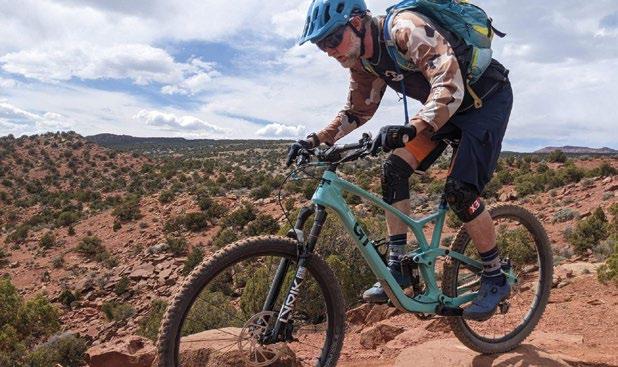

I tried to get going again but to no avail. Each time I’d push down on a pedal, the current would push me back into the rocks. I thought better of it and walked about fifty yards until the trail turned away from the edge. All the while, the gusts were literally picking the rear of my bike up slightly and skittering the tire leeward. At this point, the wind was just being rude!
There was something very cool about this, though: I didn’t get angry or frustrated! Ask any cyclist what the worst weather to ride in is, and above cold, heat, or rain, most will choose wind. Other weather conditions can be coped with by choosing the right clothing, but wind...well, with wind, you just have to deal with it. How you deal depends on your attitude. You can curse it or you can accept it as part of the adventure of your ride.


Now, I haven’t always been very zen about wind (and may not be again), but in training for this race, I was faced with a couple of big mile days that were very windy as well, and though I thought about staying home, I asked myself, “Just how many events or races have I been to that the weather was perfect?” In the big picture, not many! So off I went into the swirling air, training for wind.
So, it turns out, regardless of the wind, I was still able to complete my goal of seven laps and finish with a smile. It was fun—most of it, anyway. Attitude is a big part of mountain biking, and if you keep yours up, you can even enjoy the tough days.
Hey, it’s windy. Maybe we should go for a ride!

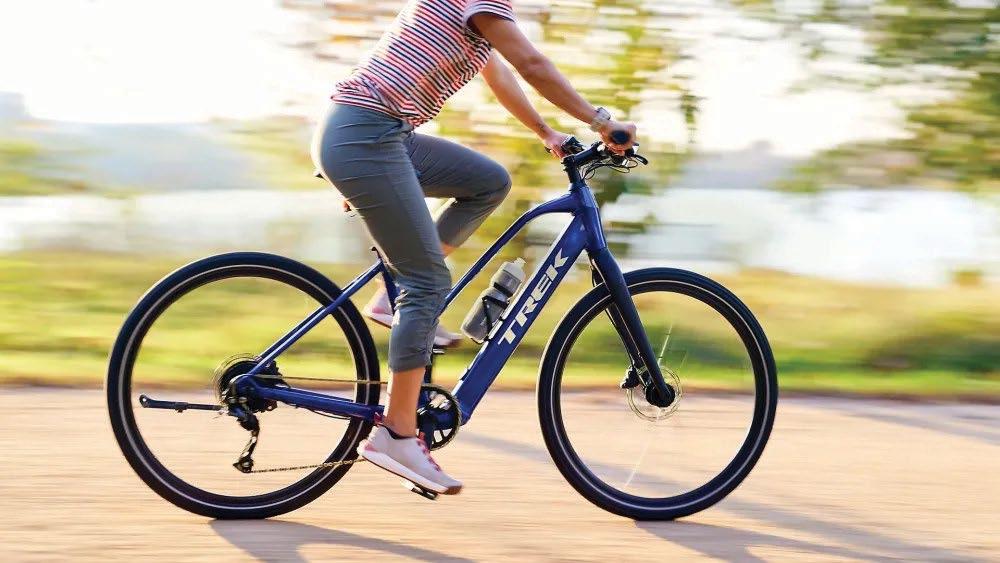



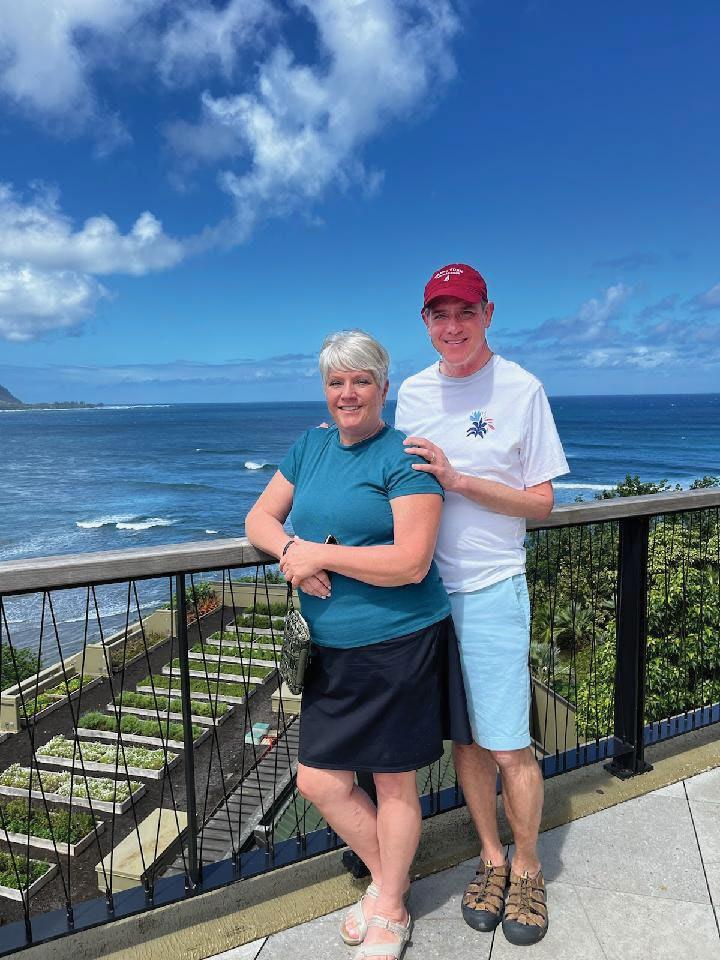
“We were on our way from North Carolina to Hawaii,” said Dave Green, a St. George resident. “While we were packing and preparing, I was a little concerned because I felt dizzy and had some double vision. I felt mostly all right though, and we were going to Hawaii, so I thought, ‘I’ll just roll with it and everything will be fine.’”
Dave’s symptoms didn’t subside, so during their layover in Seattle, he called Intermountain Connect Care. The provider recommended he be seen as soon as possible. “We went to an urgent care in Hawaii, and they sent me immediately to the ER. After a battery of tests, we learned I’d suffered a stroke.”
Dave spent just one night in a Hawaiian hospital bed. “The symptoms had stabilized,” he said, “so we finished our trip. Then after returning to St. George, another episode brought us to the ER. This time, it meant a three-week hospital stay.”
When symptoms of illness arise, it can be tempting to wait a few days to see if they subside before making a doctor’s appointment. While this tactic may work for things like a cough or sore throat, when it comes to loss of vision, arm or leg numbness or weakness, loss of speech, or difficulty walking, the clock is ticking. The time to see a doctor is now.
Every day, physicians in the emergency department at Intermountain St. George Regional Hospital see patients presenting with these kinds of symptoms— symptoms that are often indicators of a stroke.
By Terri Draper, Vice President of Communications, Intermountain Health Desert Region
prediabetes stage, the same underlying process is still at work and can lead to inflammation in the blood vessels, putting the patient at greater risk for cardiovascular disease, stroke, high blood pressure, and more,” Dr. Jones said.
Although the news that blood glucose is in the prediabetic range may come as a surprise, it is important for the patient to consider the kinds of changes that can improve their health at this stage. This often starts with talking to their health care provider.
“A stroke is the loss of the ability to do a certain function,” said Dr. Brett Christiansen, medical director for emergency medicine at St. George Regional Hospital and executive officer for Intermountain Southwest Emergency Physicians. “The part of the brain where the stroke happens determines the kinds of symptoms.”
Recognizing that people with high blood pressure, diabetes, and high cholesterol are at an increased risk for strokes may help when identifying the signs. And although strokes are more common as people age, they can happen to anyone, regardless of age.
“It’s important for them to ask their providers what factors they can control in their personal lives to decrease their risk of diabetes,” Dr. Jones said. “In many cases, they may benefit from a nutritionist consultation, or they may be able to take advantage of benefits geared toward helping patients with prediabetes offered by their health insurance.”
Making changes to a patient’s diet and exercise routine can make a big difference in whether a prediabetes diagnosis eventually becomes full-scale diabetes. In Dr. Jones’s experience, the outcome is determined heavily by the motivation and willingness on the part of the patient. “If a person can lose five to ten percent of his or her body weight, it can make a clinically significant impact on a prediabetes diagnosis,” Dr. Jones said.
With some serious strokes, the loss of function can be permanent. “If it is a transient ischemic attack (TIA), the function may return when the blockage moves on,” Christiansen said. “The key with either of these is to come to the emergency room immediately to see if any intervention can be done.”
About the Author
“We’re never going to condemn someone for coming in for ‘too small of a problem,’” Christiansen said of those who might feel awkward going into the ER for a stroke symptom that exhibited and then subsided.
Other major risk factors besides being overweight include smoking and living a sedate lifestyle. “Even if you’re eating healthy, a sedentary lifestyle increases the risk,” Dr. Jones said. “Gestational diabetes also indicates higher risk.”
When people come to the emergency room in appropriate time and the symptoms are severe enough, medication often may be given that could potentially break up the stroke and the clot, according to Christiansen. “Sometimes there is nothing that can be done,” he said. “But by coming in early, you at least have options.”
“You don’t know if it’s a stroke until you do the testing,” Dave concluded. “I learned that it’s better to err on the side of caution. I’m so grateful for the many caregivers at St. George Regional who have helped me recover. I’ve still got a ways to go, but because of their great help, I’m doing so much better.”
Another risk factor that may be more difficult to control is genetics. “Sometimes genetics do play a role in all of this,” Dr. Jones said. “However, even if diabetes is something that a patient cannot avoid despite their best efforts, they are still going to be in a much better position to deal with the diagnosis if they are doing things to promote overall better health. Life with poorly controlled diabetes is much different than life with well-controlled diabetes.”
Things like exercising at least thirty minutes each day and eating a diet filled with nutrient-dense foods while limiting carbohydrates will go a long way to better health. “I recommend patients make sustainable changes to their eating habits instead of latching on to the latest diet fad,” Dr. Jones said. “Similarly, they should find a form of exercise that is disguised as a hobby or an enjoyable activity that will help them elevate their heart rate for at least thirty minutes.”
Lisa Larson is a freelance writer with a background in public relations and public speaking and a passion for sharing great stories. You might spot Lisa with her husband and three children enjoying the downtown carousel or exploring one of the area’s hiking trails. She also enjoys reading and baking, and she is looking
For people who have done all they can do with diet and exercise, Dr. Jones encourages them to discuss further options with their health care provider.
Terri Draper is the Vice President of Communications for Intermountain Health’s Desert Region. She began her career with Intermountain in 1995 after writing for St. George Magazine for twelve years. She serves as a Planning Commissioner for the City of St. George and on the board of the Huntsman World Senior Games. She was the founding president of the Southern Utah PIO Association and has served on many other local boards, including UT’s Hazy School of Business, Leadership Dixie, and the St. George City Arts Commission. Her greatest joy is spending time with eleven beautiful grandchildren, their parents, and her husband Brian.
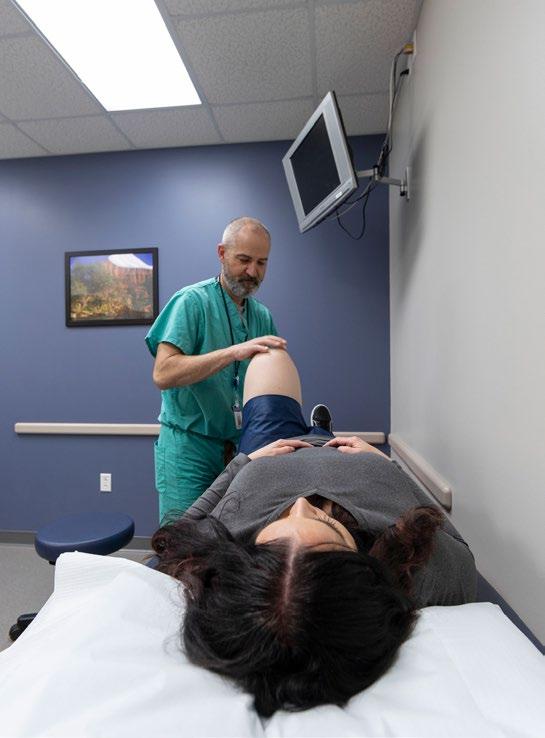
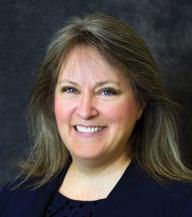

By Annelies Newman, RDN, CD
Have you ever been asked what cuisine you would consider to be traditionally American? Most of our favorite foods, like spaghetti or tacos, originated in countries outside the United States: Italy, Latin America, or other foreign countries. While there may not be a single meal that defines the American food we eat today, our ability to thrive in a melting pot of flavors from all over the world may be the definition of what is truly American.
There is one player, however, that perfectly depicts the American food journey all on its own: the apple. Its origin in a faroff country and its diversity make it the epitome of a truly American food.
“Would you like an apple?” my brother
asked, searching his cupboards for a small snack to share upon my unexpected visit.
“That sounds great,” I replied. He pulled out a knife, cut the apple into quarters, and served it to me on a plate. He then brought over the salt shaker and put a dash of salt on his portion. Suddenly, I remembered our childhood days munching on fresh green apples off the tree with a dash of salt on the white flesh. My eyes widened as I realized what I had forgotten. “I don’t think I have salted an apple in years,” I exclaimed as I tried some small sprinkles on my next bite. It was so delicious!
Dating back over 400 years, apple trees were introduced to the new land of America from Europe. Apple orchards spread across the mid and northern parts
of the U.S. and now thrive from New York to Washington and most states in between. We can thank Johnny Appleseed and countless others who cultivated and farmed orchards. Today, apples have diversified into hundreds of unique varieties, much like the American people.
Each individual variety may differ in their phytochemical content levels but all apples provide great health benefits. They are mainly composed of water and carbohydrates. As a rich source of soluble and insoluble fiber, fresh apples help regulate blood sugar levels with a fairly low glycemic index. Apples are a good source of vitamin C, which is an antioxidant. Other strong antioxidants found in apples include quercetin, catechin, phloridzin,
and chlorogenic acid. Potassium, a key mineral in the body, is also found in apples. Together these nutrients help support a healthy gut and improve heart, mental, and immune health. In laboratory tests, these compounds have also been shown to decrease cancer cell growth.
Apples can be used in a wide variety of ways. They are excellent eaten fresh. With so many to choose from, you could enjoy doing some taste testing at home to determine your family’s favorites so that you know what to throw into a packed lunch. Apples are easy to add to a hiking pack to help provide energy and hydration for a sustained trek. Aside from being eaten alone, they can be sliced or chopped to sprinkle on a breakfast cereal or mixed with other fruit for a colorful dessert. It’s common to bake them into apple muffins, apple fritters, or apple pie. Health benefits decrease with the addition of fats and sugars, so select these options less frequently.
Apples are also used to make apple cider vinegar, which has some additional health
benefits. Research supports apple cider vinegar’s possible weight loss and glucose lowering benefits. Just be careful when taking it: dilute it with water or follow it with a glass of water.
For my own children and for health reasons, I find the best way to eat an apple is just the way I used to eat it as a child: fresh. I recently sliced up an apple for my three little boys and turned on the Disney 1948 short animated film of Johnny Appleseed. We watched it while snacking on apples and have since learned to sing along with Johnny Appleseed:
“The Lord is good to me, And so I thank the Lord For giving me the things I need: The sun and rain and an apple seed. Yes, He’s been good to me.”
Disney is certainly expert at memorable melodies. Apples are good for your heart and so is hearing three little voices singing out loud in gratitude for the wonders of the all-American apple.
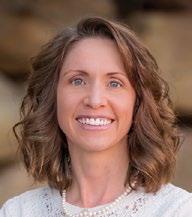
About the Author Annelies Newman, RDN, CD, received her bachelor’s degree from Brigham Young University with a major in nutrition and dietetics and a minor in music. She is a speaker and presenter on nutrition related topics. Currently, she owns a private practice guiding individuals to make changes for better health and wellness. On the side, she enjoys adventuring with her husband and three little boys outdoors. She believes that real food is good for the body and should be enjoyed!

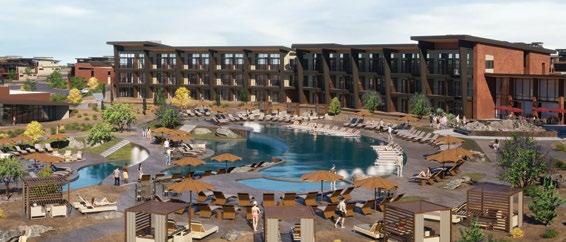
By Jessica Elgin, REALTOR®
Resort residences are on the rise. You can purchase a townhome, condo, or single-family residence, stay in it when you want (usually with some limit on the number of days), and receive revenue when the hotel operates it as part of its room offerings to resort guests when you are not there. Ventana Resort and Residences in Kanab, Utah, is one of these resorts.
Ventana’s highly amenitized accommodations offer a unique opportunity for individuals to prioritize their health and well-being in a luxurious and relaxing environment. Whether you are able to take advantage of the resort’s facilities and services for a weekend or a few months, you will reap the benefits. From access to topnotch dining venues to a focus on outdoor activities, Ventana Residences are the ultimate wellness retreat for those looking to rejuvenate both their body and mind.
One key health benefit of resort living is the emphasis on physical activity. Ventana offers a state-of-the-art fitness center, 10,000-square-foot resort pool, climbing walls, trails, and outdoor sports facilities, allowing residents to stay active and maintain a healthy lifestyle. Whether it’s a morning swim in the pool or a sunset hike on nearby trails, resort living encourages individuals to incorporate exercise into their daily routines.
The Outdoor Outfitters provide a thrilling way to explore new adventures. Here, you can rent bikes, off-road vehicles, climbing equipment, and more. Learn from an experienced guide how to navigate slot canyons. Take a guided ATV tour or hike and explore the wonders that exist just beyond the resort. The options are endless.
In addition to physical activity, resort residences also prioritize mental well-being. The serene and peaceful surroundings of a resort provide the perfect setting for relaxation and stress relief. Residents can take advantage of spa services, meditation classes, and mindfulness workshops to unwind and recharge. The focus on mental health at resort residences helps individuals achieve a sense of balance and inner peace.
Furthermore, resort living promotes a healthy diet and nutrition. Ventana offers a variety of options, such as organic produce, convenient grab-and-go meals, and sit-down restaurants to reinforce the importance of eating well. By providing access to fresh
and nutritious food, Ventana Resort and Residences supports a healthy lifestyle and encourages residents to make mindful choices regarding their diet.
Another health benefit of resort living is the sense of community and social connection it fosters. Ventana residents have the opportunity to meet like-minded individuals, participate in group activities, and build meaningful relationships. The support and camaraderie found in resort communities can have a positive impact on mental health and overall well-being.
Resort residences are the ultimate wellness retreat for those seeking a holistic approach to health and happiness. By offering a combination of physical activity, mental relaxation, healthy eating, and social connection, resort living provides a comprehensive wellness experience that can transform lives not only for a moment but for many years to come, creating a lasting impact on daily habits and routines. So why wait? Embrace the health benefits of resort living and start your journey to a healthier, happier you today.
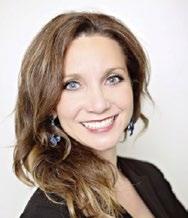
About the Author Jessica Elgin entered the real estate market in 2000 as an investor. After having great success, she taught investors how to do the same. Shortly after, she got her Realtor license and quickly gained the elusive Double Grand Centurion Award with Century 21 for being the number five agent for her region in the Southwest United States. Jessica has sold over 800 homes but is better known for her real estate coaching and team development. Jessica now focuses her portfolio on residential resort products.

By the Vista Healthcare Team

May is Arthritis Awareness Month. The experts at Vista Healthcare’s Joint and Arthritis Centers want to remind the millions of people affected by arthritis that they are not alone in their struggle.
According to the Centers for Disease Control, one in five adults in the U.S. has arthritis that a doctor has diagnosed. Arthritis stands as the leading cause of disability in the United States, impacting over 53.2 million individuals. Although there are more than one hundred types of arthritis, the most common is osteoarthritis. While there is no cure for arthritis, effective management and treatment are possible with the support of a skilled medical team. Vista Healthcare Rheumatology delivers exceptional rheumatology services to southern Utah residents, focusing on efficient and compassionate patient care within a welcoming atmosphere. Dr. Grant, a rheumatology specialist, leads the team at Vista’s renowned Joint and Arthritis Center.
What Is Arthritis?
Arthritis is a general term for conditions that affect the joints, tissues around the joints, and other connective tissues. Depending on the type of arthritis, symptoms can develop suddenly or gradually over time. They can also come and go or persist. Pain and stiffness in and around one or more joints are common symptoms for most types of arthritis.
Experts don’t know the causes of many forms of arthritis. However, we do know that gout is caused by too much uric acid in the body. Sometimes, specific infections can also cause arthritis. You can reduce your risk of getting some types of arthritis by changing risk factors you can control. These include obesity, joint injuries, and smoking.
1. Physical activity is a simple, effective, drug-free way to relieve arthritis pain. Nearly a third of adults with arthritis are not physically active. Regular physical activity can help ease arthritis pain and morning stiffness, improve joint flexibility, reduce the probability of disability, give you more energy, and improve mood. Stay as active as your health allows, and change your activity level depending on your arthritis symptoms.
2. Talk to your doctor if you have arthritis symptoms such as pain, stiffness, or swelling in or around one or more of your joints. Doctors usually diagnose arthritis using the patient’s
medical history, physical examination, X-rays, and blood tests. There are many forms of arthritis, and diagnosing your specific type can help your doctor determine the best treatment. It is possible to have more than one form of arthritis simultaneously. The earlier you understand your arthritis, the earlier you can start to manage your disease, reduce pain, and make healthy lifestyle changes. “Patients suffering with arthritis really get improvement from the therapies we give them, more so than in a lot of other medical fields,” said Dr. Michael A. Grant. “Once we’re able to make a diagnosis, we can see the patient’s quality of life visibly improve.”
3. Maintaining a healthy weight is crucial for individuals with arthritis. For those who are overweight or obese, shedding excess pounds significantly alleviates stress on weightbearing joints, such as the hips and knees. Even a modest weight loss of ten to twelve pounds can decrease pain and enhance physical function for arthritis sufferers. Engaging in low-impact, arthritis-friendly physical activities, such as walking, along with adopting healthier dietary habits can aid in weight loss at any age.
Booking an appointment with Vista Healthcare is simple. You can give them a call or visit their website at vista-hc.com. Vista’s rheumatology department aims to find answers to your arthritis questions, manage your symptoms, reduce pain, and increase your quality of life.
Should you require specialty care that includes rheumatology, endocrinology, neurology, pain management, spine care, physical therapy, chiropractic care, or sports medicine, give Vista Healthcare a call at 435-879-7610 today or visit their website for more information. Vista Healthcare is located at 1490 E. Foremaster Drive, Suite 220, St. George, Utah, 84790.
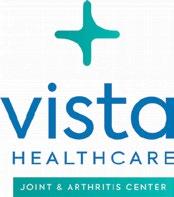
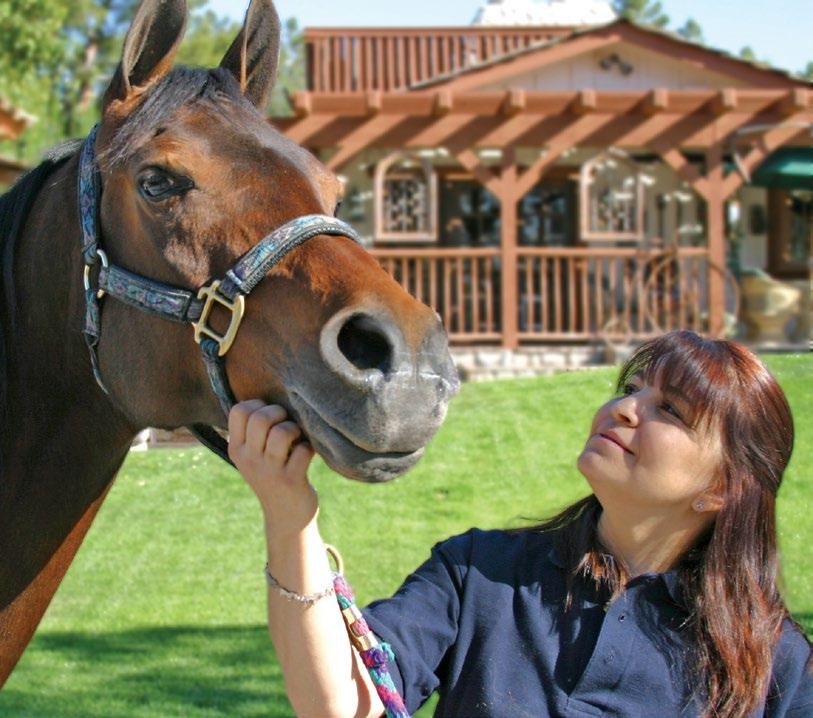
By Anita DeLelles, LMT
Equine massage and acupressure are alternative therapies gaining popularity in the world of horse care. While traditional veterinary medicine remains essential, these holistic approaches offer complementary benefits that can enhance the overall well-being of horses, dogs, and cats. All horses, from older horses to top performance horses, can benefit from massage therapy and acupressure, both services offered by WOOF! Wellness Center.
Equine massage is the practice of using hands-on techniques to manipulate the soft tissues of a horse’s body, including
muscles, tendons, and ligaments. It aims to relieve tension, improve circulation, enhance flexibility, and alleviate pain. Like human massage therapy, equine massage involves various strokes, kneading, and stretches tailored to address specific issues or areas of concern in the horse’s body.
One of the primary benefits of equine massage is its ability to promote relaxation and reduce stress in horses. Just like humans, horses can experience muscle tension and stiffness due to physical exertion, injury, or emotional stress. Regular massage sessions can help release built
up tensions, allowing the horse to move more freely and comfortably.
Moreover, equine massage can aid in injury prevention and rehabilitation. By improving blood flow to muscles and joints, massage helps speed up the healing process and reduce the risk of further injuries. It can also help identify areas of soreness or imbalance before they develop into more significant problems, allowing for early intervention and treatment.
Along with massage, acupressure is an add-on therapy that has been used for centuries to promote health and wellness in both humans and animals. Acupressure involves the manual manipulation of specific points on the body, known as acupressure points, to stimulate the body’s natural healing response. Stimulation can be done with the hands or through the use of a cold laser. This is the same technique as acupuncture but without the use of needles. Cold laser treatment is a noninvasive modality which stimulates cell regeneration and increases blood circulation on the various acupressure points.
Acupressure is believed to regulate the flow of qi and restore balance within the body, addressing a wide range of physical and emotional issues. For horses, acupressure has been shown to be effective in managing pain, reducing inflammation, improving digestion, and enhancing overall performance. It can be particularly beneficial for horses suffering from chronic conditions, such as arthritis, laminitis, or musculoskeletal injuries.
One of the significant advantages of equine massage and acupressure is its noninvasive nature and minimal side effects. Unlike medication or surgery, it does not involve the use of drugs or anesthesia, making it a safe and natural alternative for horses of all ages and breeds. Additionally, massage sessions
Anita DeLelles, LMT, is a certified equine and small animal acupressure practitioner with accreditation from the Tallgrass Animal Acupressure Institute and a member of IAAMB. Her Tallgrass training has included two consecutive summers in Bath, England, near where she lived as a child, as well as coursework in Colorado and northern California. Additionally, Anita is certified in animal massage from the Northwest School of Animal Massage as well as human massage in the state of Utah and is a graduate of UNLV. In 2013, Anita and her husband, Ron, opened WOOF! Wellness Center & Training Academy to serve pets and their health-conscious pet parents. WOOF! is dedicated to improving the quality of life for companion and competitive animals through fitness and conditioning, education, and proper nutrition. Anita shares her life with Ron and their overly-pampered cats in Santa Clara, Utah.
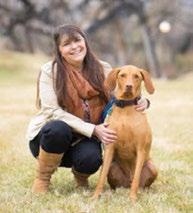
are relatively quick and can be performed on-site, minimizing the stress and inconvenience associated with transporting the horse to a veterinary clinic.
find them downright terrifying. With the coming Fourth of July and Pioneer Day (July 24) festivities ahead, it’s crucial to take extra precautions to keep furry friends safe and calm. The unexplained loud noises, bright flashes of light, and rumbling vibrations shake some dogs to the core with fear. Anxiety is an elevated response of the nervous system, which is exhausting over long periods of time. Close curtains and create a cozy hideaway in which pets can take cover during fireworks displays. A quiet room indoors or a familiar crate draped with blankets and padded with pillows for extra soundproofing provides a safe environment. Play some music, the TV, or a fan for white noise. It will help drown out the booms and bangs and calm their nerves. Many dogs benefit from calming supplements, CBD, and natural herbs. We recommend a trusted brand, Healthy Paws No More Drama, a highly effective supplement to reduce anxiety.
Ideally, equine massage, acupressure, and cold laser treatment can complement traditional veterinary treatments, providing a holistic approach to horse care. While conventional medicine focuses on treating symptoms and addressing specific ailments, these alternative therapies target the underlying imbalances within the body, promoting overall health and wellness. By combining different modalities, veterinarians and equine therapists can create comprehensive treatment plans tailored to the individual needs of each horse. As our understanding of equine physiology and alternative medicine continues to evolve, equine massage and acupressure are likely to play an increasingly important role in the future of equine healthcare.
July afternoons are perfect for a backyard barbecue. Firing up the grill with hotdogs and burgers is a uniquely American summer tradition enjoyed with family and friends. But before you slice into the watermelon, remember that some foods can be harmful to dogs and cats. Keep the grilling meats out of reach, and be mindful of foods like onions, garlic, grapes, and chocolate, which can all be toxic to pets. Instead, treat them to some pet-safe snacks like Real Meat treats or homemade pup-sicles to keep them cool and satisfied.
sun can skyrocket in a matter of minutes, putting pets at risk of heatstroke and dehydration. If you’re running errands or heading to the store, it is best to leave your pets at home where they’ll be safe and comfortable.
So there you have it. Follow these tips, and with some TLC, you will be ready to soak up the sun and make long-lasting memories with your furry companion by your side. Cheers to a paw-some summer!
For more information on health and wellness for your pet, visit woofcenter.com, stop by WOOF! Wellness Center & Training Academy in Santa Clara, Utah, or call 435-275-4536.
For more information on health and wellness for your pet, visit woofcenter.com, call 435-275-4536, or stop by WOOF! Wellness Center & Training Academy in Santa Clara, Utah.
Last but not least, let’s address car safety. We all know that leaving a pet in a hot car is a big no-no, but it’s worth repeating. Even on mild days, the temperature inside a parked car in direct
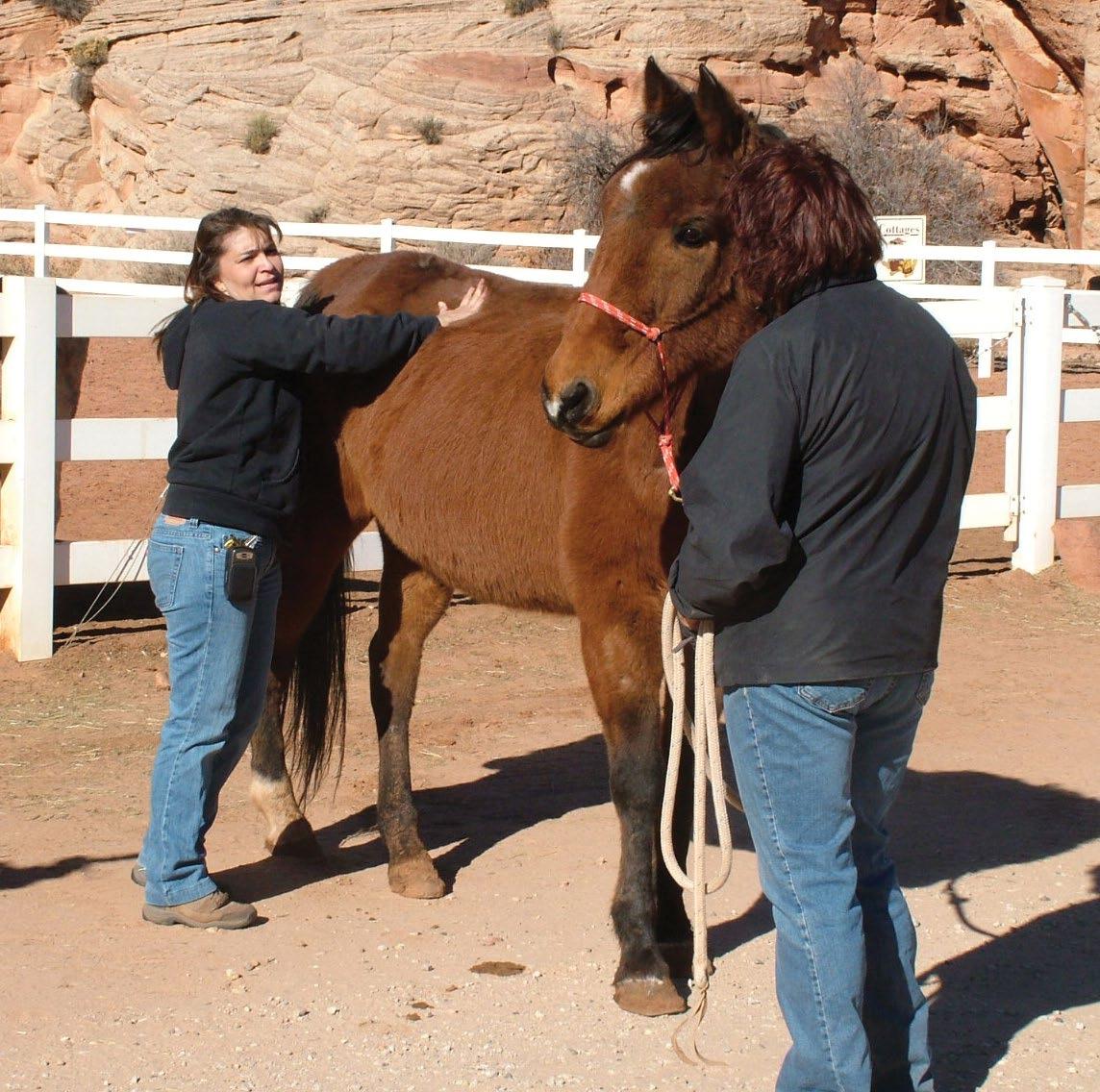
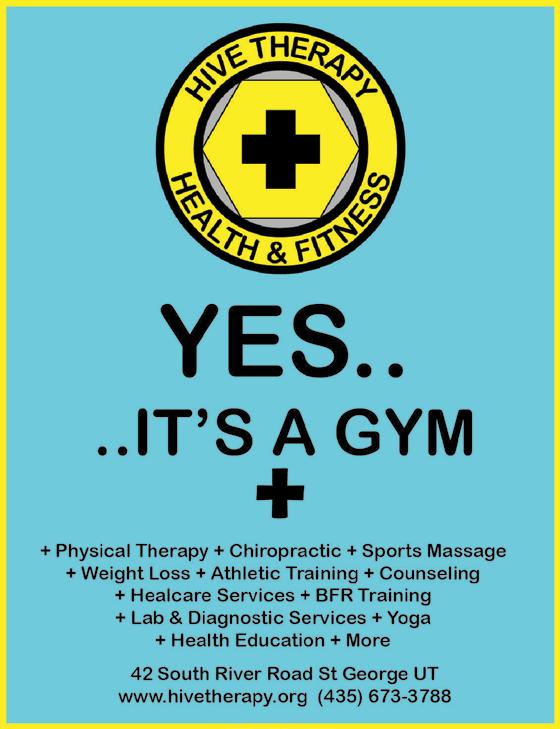
Join WOOF! Wellness Center & Training Academy for trainer-guided hikes. We request that dogs have completed a basic manners class or loose leash walking class to participate in the hike. Our trainer can set up a free assessment if you are not sure about your dog’s ability to join the hikes. Call 435275-4536 or visit www.woofcenter.com.
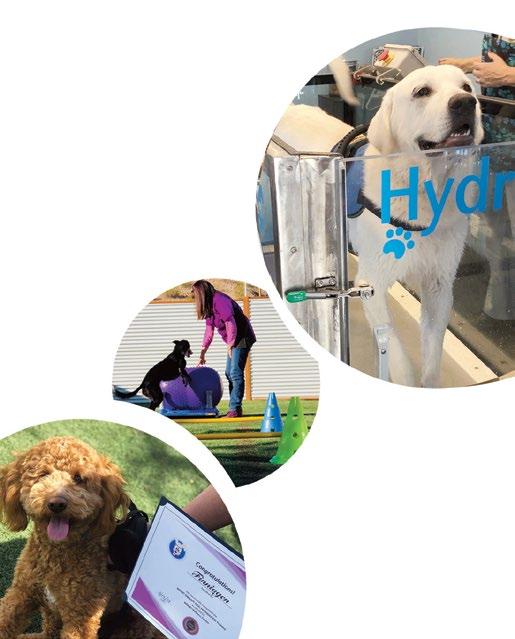


By Dr. William Plumb, DDS

About the Author
Dr William Plumb graduated from the State University of New York School of Dentistry in 2006. He opened Plumb Dental in St George, Utah, in 2009. He has received extensive continuing education in cosmetic dentistry as well as oral surgery and implantology. Dr. Plumb loves living in southern Utah with his wife Kari and their four children.
Someone asked me once if it was difficult to practice dentistry in a town where there seems to be a dental office on every corner. I admit that practice success might come a little easier in an area more underserved than St George. We do have a high number of dentists per capita. To make things just a little bit harder for me professionally, we are blessed to live in a community full of gifted and talented dental providers. But I’ve never seen my colleagues as competition. We attend study groups together and work through complex cases together. We serve at community events. Our children attend the same schools, and we worship together.
However, in spite of the number of dentists and dental practices, a large percentage of southern Utah’s population does not see the dentist regularly. And that is what I feel our main competition is: all the things that we spend money on and invest in other than our oral health. I’m talking about smart watches, televisions, side-bysides, surfboards, mountain bikes, and the perfect set of heels.
The last thing anyone wants to do is spend money on their teeth. It’s not fun or exciting, but it can be life changing. I often say in my office that if you want to avoid spending a lot of money at the dentist, you should consider spending a little. Preventive dental care is inexpensive when compared to the treatments that are
sometimes needed to correct more serious issues. And dental problems, diagnosed and treated early, are more affordable than when you put off needed care.
Neglecting oral health comes with a price. A few years ago, there were 2.1 million emergency room visits for dental emergencies. That number increases every year. In our country, children miss over 34 million school hours each year because of dental pain, and businesses report losing over $45 billion each year from missed work due to dental issues.
People don’t realize that tooth decay, or cavities, is the most common chronic disease. In fact, the only disease more prevalent in our society than gum disease or tooth decay is the common cold. About one in four adults in the U.S. have an untreated cavity, and nearly half of adults age thirty or older show signs of having some form of gum disease.
I don’t share this with you to make you feel guilty. I know that there are more important things in life than teeth. This is not meant to be a judgment of your priorities. My goal is for you to be happy and healthy. I want you to live your best life, and I know this isn’t possible without good oral health. Anyone who has experienced an abscess or an infected tooth knows how devastating it is. People who are missing teeth often share with me the emotional and physical burdens they carry as a result. Oral health influences how we talk, laugh, and interact with others. It affects how we enjoy food. It impacts how our bodies work and perform.
Make time to see your dentist regularly. If you haven’t been in a while, go back. I promise we’ll be happy to see you. There is no reason to feel ashamed or embarrassed. We won’t judge. My peers in the southern Utah dental community and I just want to help.


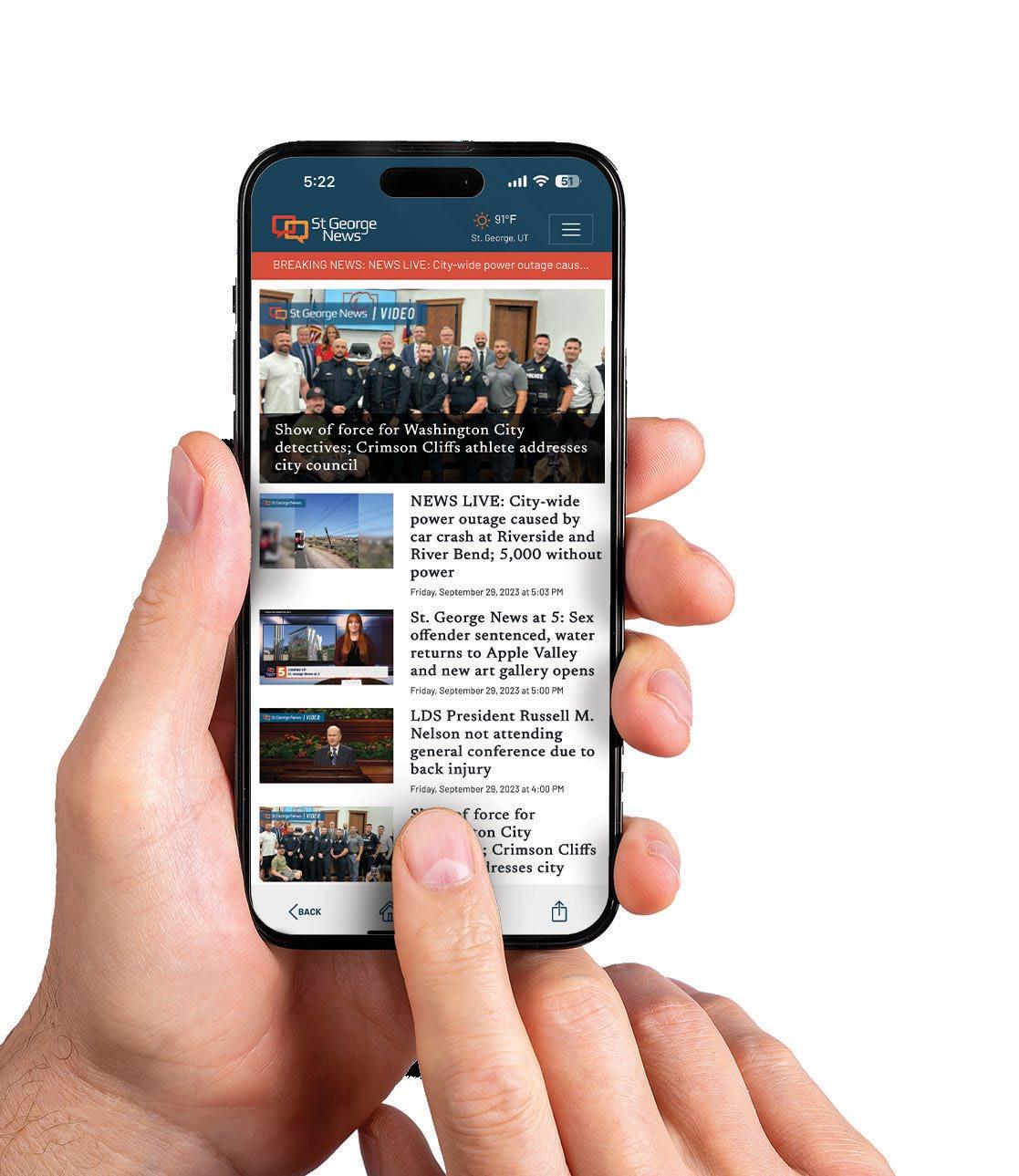
Wade’s Walkabout
By Mark Wade

Streaks of morning sunlight stretched from the eastern horizon as we stood on the rim of Utah’s Little Grand Canyon. From the Wedge Overlook of the San Rafael Swell, we descended below the rim on a steep trail that enabled us to scale a mildly sloped pinnacle within the canyon’s interior. This vantage point was the perfect spot from which to take in the panorama of the main canyon and signal back to others on the rim that this scene was worthy of many photographs.
The San Rafael Swell is a vast maze of desert canyons and plateaus that encompasses an area of Utah that lies east of Ferron, west of Green River, and north of Hanksville. In fact, any one of these communities would be a great jumping-off point to explore this region. If it were located east of the Rocky Mountains, The Swell would likely be designated a national park, but in Utah, this vast area is hailed as a multi-use destination for hiking, cycling, motorized vehicles, and horseback riding.
In addition to the rock canyons, towers, and arches, the San Rafael Swell is filled with the remnants of the earth’s history, such as dinosaur tracks and bones, Native-American rock art, and evidence of the more recent pioneer inhabitants.
A recent trip to the Swell led us on well-graded dirt roads to Utah’s newly renamed Jurassic Dinosaur National Monument, renowned for its vast deposits of Jurassic-era dinosaur fossils. In fact, this area is said to be one of the world’s richest dinosaur fossil beds. Allosaurus, Stegosaurus, and other bones found here are on display at the monument’s visitor center.
The Rochester rock panel, and Buckhorn Wash rock panel are just two of many easily accessible locations where artwork from as far back as 2,000 years ago is on beautiful display.
The rugged and remote terrain of the San Rafael Swell provided the perfect hideout for notorious outlaws Butch Cassidy and Matt Warner at the end of the nineteenth century. They used the Swell’s natural features to their advantage, hiding out in secluded areas where law enforcement would have a hard time tracking them down. Over one hundred years ago, Matt Warner signed his name in axle grease on a canyon wall not far from the San Rafael River.
Pronghorn sheep are often visible as they traverse the broad plains that lead to the
area’s vast canyons. Blue herons, eagles, hawks, and other large birds are sometimes visible within their natural habitat.
Additional sites to experience in and around the Swell include Goblin Valley State Park, Little Wild Horse Canyon, Horseshoe Canyon, the San Rafael Reef, Temple Mountain, and Millsite State Park. This list could easily be doubled or tripled in size.
Many of the geologic attractions in the San Rafael Swell are located far from
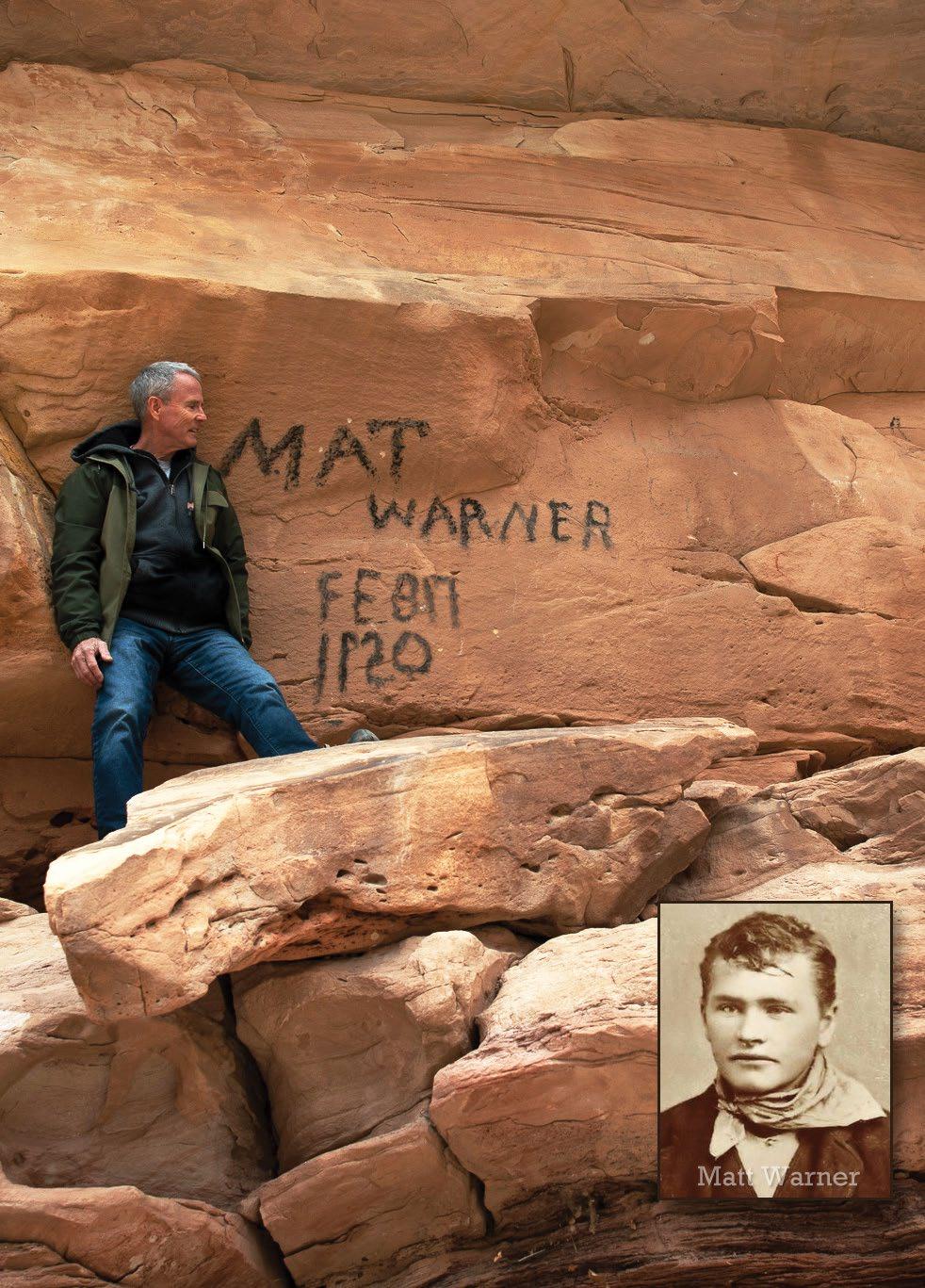
paved roads and require traveling over unmaintained dirt trails. A four-wheel drive vehicle can best access these remote areas. That being said, the local county roads are well-graded, and many of the attractions mentioned here are accessible in good weather conditions via a twowheel drive vehicle.
visit


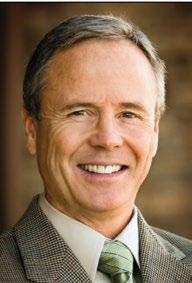
About the Author Mark Wade is active in hiking, writing, photography, and videography. He works as a tourism marketing consultant, for which he has won numerous awards. He is a weekly guest on the KSL Outdoors radio show. Mark is the former Director of Tourism for southwestern Utah and has served on the board of directors for various tourism associations.
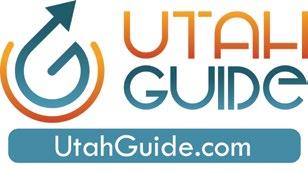

If taking the time to engage in dialogues with your partner generates love, romance, interest, and connection, why would you ever stop? “ “
By Matt Eschler, PhD, LMFT
Before plunging into the journey of marriage, most couples take time getting to know and understand each other. Do you remember those long, intimate conversations with your partner and the intense curiosity the two of you had about each other? Do you remember wanting to know everything about your soon-to-be spouse, from their deepest hopes and dreams to the kind of shampoo they used. The healthiest relationships in our lives are built on a foundation that includes time spent together, curiosity about each other, tons of active communication, and empathy!
If taking the time to engage in dialogues with your partner generates love, romance, interest, and connection, why would you ever stop? I have asked that question to hundreds of couples over the last three decades, and I get the same answer over and over again: couples get to a point in their marriage where they are so busy and life is so hectic that they decide they “already know” what their person thinks and feels. Couples who have conversations the length of a bumper sticker and whose main dialogues have devolved into monologues hurled at each other during a conflict lose the intimate connection with their spouse that they once had.
Couples who have “lost the loving feeling” have often decided they already know everything they need to know about each other. They have swapped active listening with monologuing and have exchanged the vulnerability of curiosity with a certainty that there is nothing new to learn about their spouse. Curiosity is the oxygen that keeps love alive. If you are not on a quest to update information, if you have stopped searching for accuracy in the moment, you are creating a roommate with whom you can debate. When you want a lover not a roommate, you must remember that all of us, without exception, share a fundamental, deeply held need to be heard and understood!
To enjoy the intensity that love can offer, you must also become vulnerable. Being vulnerable is desiring connection over the need to “be right.” Couples entering into marriage counseling are at a fork in the road that requires them to decide the direction they want to travel. On one hand, they can determine they already know the problems that exist in their relationship and engage in strict monologues about how the relationship works. On the other hand, they can decide to humbly engage in dialogues that explore their perspectives with empathy. Only one of these paths offers them the amazing opportunity to get to know each other, gain updated information, connect at a deeper level, and feel those romantic feelings that each of them craves.
To be an excellent communicator, you must do three things that are uncomfortable:
1. Drop all biases. If you screen everything through your biased lens, you cannot be empathetic. Be willing to see a different point of view and update your beliefs.
2. Be vulnerable enough to listen until you completely understand what the other person is expressing, even if what they say is different than what you believe.
3. When it’s your turn, share only what you feel, think, and believe. Resist the urge to tell your partner what he or she thinks, feels, and believes.
A dialogue is a process that rises above the conflicts you and your partner share and generates a deeper, more romantic connection by allowing two realities to exist at the same time. Seeking to understand your spouse’s reality creates a synergy toward an honest exchange of ideas. Couples that have an eternal, honest exchange of ideas never lose that loving feeling!

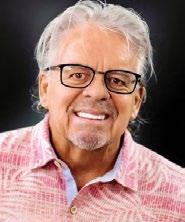
Matt lives in St. George, Utah, where he and his wife, Chris, are enjoying their life with each other. Since their children have grown up and moved out to pursue their dreams, Matt and Chris travel the world. They want to visit 200 countries before they are done. Matt and Chris are active in their community and enjoy working out, training for marathons, and spending time participating in numerous activities with their adult children. Matt received a PhD in psychology. He is focused on the arena of resolving personal conflicts and improving interpersonal relationships. In addition to his doctorate degree, Matt has earned a master’s degree in marriage and family therapy, studied criminal justice and received a category one license with Peace Officer Standards and Training, and received a degree in the Arts of Business Management. Matt is a professor at Dixie State University and hopes to be part of the positive growth of southern Utah.

By Anna DuPree, BFA, LMT
I am sure you can remember a time in your childhood when you really did not want to do something. Maybe it was going to school, visiting Aunt Mabel, or doing something else that made you uncomfortable. Then, poof! Like magic, you had a stomachache, a headache, or an anxiety attack.
You may have been told that these symptoms were “all in your head.” However, scientific studies are finally catching up to what our bodies know intuitively. Recent Mayo Clinic research states that “poor emotional health can affect headaches, muscle pain, chest pain, fatigue, low libido, stomach upset, and sleep problems” (mayoclinic.org).

Research is also catching up on the effects of trauma in the body. Trauma is defined as an intensely distressing or disturbing experience, which means our trauma is deeply individual. What is deeply distressing to one person may be a regular Tuesday to another. According to a study found in Good Therapy, emotional or physical trauma “pushes the activation of the nervous system beyond its ability to self-regulate” causing it to stay “on.” Those that get stuck in trauma experience a whole range of negative physical and emotional effects. For instance, they
are more likely to use drugs; experience depression, anxiety, eating disorders, and muscle pain; and manifest injury (psychologytoday.org).
This is where it gets interesting! All nerves in the body originate from the spinal cord and run through the fascia. The fascia is like the netting that holds the body and organs together. Remember what trauma does to the nervous system? The distressing experience that is stuck in the nervous system can affect us anywhere in the body because all the nerves run off of the spinal cord, which comes from the brain.
Traditional Chinese medicine has studied this phenomenon for thousands of years. It has been able to determine where each emotion or distress is found in the body. For example:
• The liver is where we process anger.
• The heart is where we experience the lack of joy.
• The kidneys store fear.
• The lungs hold grief and sadness.
• The spleen is where we experience worry and lack of nurturing.
Within these organs, we also experience two types of energy (Chi): Yin, which is receiving, allowing, and still, and Yang, which is giving, external, and outgoing. In our western world, most of us experience an imbalance of Yin, so we need to learn to receive more and be still. This stillness can best be experienced in meditation. There are specific methods of mindfulness that can allow the “stuck” experiences or emotions of trauma to move out of the body, allowing the nervous system to finally come out of fight, flight, or freeze mode.
Almost any method that connects the mind, body, emotion, and energy can be helpful with this process. These can include reflexology, tai chi, yoga, breathwork, Reiki, shamanic work, chakra work, prayer, and meditation. Reiki is used in over 800 U.S. hospitals and over 1500 Japanese hospitals (uclahealth.org).
There is a wonderful scene in the last Harry Potter movie where Harry has just sacrificed himself and is in an “afterlife train station” where he meets his mentor,
Dumbledor. Harry asks, “Is this real or is it in my head?” Dumbldor responds, “My dear boy, of course this is in your head, but why would that make it any less real?” I invite you to spend a little more time with your nervous system, to feel where you may be stuck, and then to seek out mindful activities that will heal this deep relationship between head and heart, between mind and body.
It has been my pleasure to help clients all over the U.S. and the world heal this relationship. This work is often much more gentle than you think. Feel free to reach out to schedule a sixty-minute session to begin the healing path with your own personal relationship to your head and heart, your physical and emotional bodies.

About the Author
Anna is a licensed massage therapist specializing in the relationship of the heart to the head or the mind to the body. Anna and her partner Jared have developed a specialized method of deep meditation to release old emotional experiences that can contribute to physical discomfort or illness. She now lives in the Blue Mountains of North Carolina after spending the past ten years in St. George, Utah, connecting with her pioneer ancestors who settled the southern Utah area. She provides her sessions remotely. You can contact Anna by going to www.journeywithanna. com or by emailing anna. dupree@gmail.com.
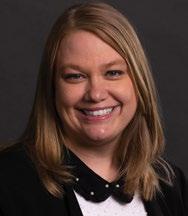
About the Author
Jyl Hall is the director of public relations at Utah Tech University. With a passion for helping students accomplish their educational goals, she loves connecting the community with Utah Tech’s comprehensive polytechnic education. At UT, students are prepared to graduate career-ready by participating in handson learning opportunities in the university’s 275+ academic programs as part of Utah Tech’s “active learning. active life.” approach to education.
By Jyl Hall

Meeting both local workforce demands for qualified healthcare administrators and students’ needs for flexibility, Utah Tech University is offering a fully online Master of Healthcare Administration program for the first time this fall at the most affordable tuition rate in Utah.
Making the program even more affordable for those already working in healthcare, Intermountain Health employees can apply their PEAK tuition coverage benefit toward the cost of UT’s Healthcare Administration degree.
“Utah Tech’s MHA program is not just an academic pursuit but a vital community service,” Tiffany Vickers, director of Utah Tech’s Population Health Program, said. “We want to equip students with the knowledge and skills necessary for healthcare administration roles, enhancing the quality and accessibility of healthcare in our region, including underserved rural and frontier areas.”
In line with Utah Tech’s active learning approach to education, the program offers hands-on opportunities such as internships, study abroad opportunities, and research projects to ensure students gain real-world experiences.
Unique to UT, the Healthcare Administration program awards micro-credentials, and students can earn a biomedical informatics certificate if they wish to specialize their degree without additional time or cost. These credentials embed critical informatic skills and enhance students’ expertise in the intersection of healthcare, information, technology, and data management.

Additionally, the program, which can be completed in two years, prepares graduates for diverse healthcare settings, including hospitals, outpatient clinics, long-term care facilities, and health information technology sectors.
Utah Tech’s MHA program is not just about gaining knowledge. It’s about acquiring the skills and credentials that matter to employers and preparing graduates to fill vacancies in in-demand healthcare roles, such as revenue cycle manager, quality improvement director, and healthcare operations manager, all of which average annual salaries over $100,000, according to Glassdoor.
“Incorporating a Master of Health Administration program in our region offers a significant value proposition for aspiring healthcare leaders,” Vickers said. “Our curriculum is purpose-built to equip students for advanced leadership roles, focusing on fostering inclusive environments and contributing to healthcare systems that positively impact the communities they will serve.”
The first cohort starts in the fall semester and applications are due Aug. 1. For more information or to apply, visit health. utahtech.edu/masters-of-health-administration.

For more information about Utah Tech University, please visit utahtech.edu.







By Lyman Hafen
During the first summer of COVID, I took long early morning walks beneath the sycamores along Santa Clara Boulevard. I’d pass the homes, lots, and farmsteads of my ancestors and the other Swiss immigrants who settled there in the early 1860s.
One morning, as I passed a house my great-great-grandfather built, I noticed a man a little further down the walk. He was painting on a concrete retaining wall along the sidewalk by the road. The wall is about eight feet high and maybe a hundred feet long. It holds back the foot of the hill that rises up to the Santa Clara Heights upon which my house sits.
As I drew nearer, I realized he was creating something very colorful and compelling on his blank concrete canvas. And as I drew even nearer, I realized he was a Native-American, perhaps about my age. He wore denim jeans, a black t-shirt, and glasses much like mine. He was painting a giant circle using all the colors of the rainbow.
Then I saw the detail in his painting—the various graphic figures, shapes, images, and icons. There were already a dozen circles on the wall, each of them four or five feet in diameter. They ran the full course of the wall, each distinctly designed, each with its own color schemes, and each, it was obvious, telling a chapter in an ongoing story.
I said hello to the man as I walked by. He nodded and returned a hello, hardly looking away from his work. I walked on down the sidewalk and had nearly reached the front lawn of the Jacob Hamblin Home before I suddenly turned and started back. It was not a conscious decision; I simply turned on my heels and headed back.
This time, I introduced myself. The man stopped his work. His eyes turned slowly toward me. He graciously greeted me. He put down his paintbrush and told me his name was Daniel Growler. He was from the Cedar Band of Paiute. He lived in Cedar City, and
he immediately named someone he had gone to school with who now lives in Santa Clara. He wondered if I knew him. I told him I did, and I told him the name of a Paiute girl from the Shivwits Band that I had gone to school with. He knew her, too.
We talked for a while. His voice was soft, gentle, and sincere and passed into my ears as naturally as the breeze. He told me he had been asked by the mayor of Santa Clara to paint a mural on the retaining wall. The story he was bringing to life on that long gray strip of concrete was sacred to his people. He told me each circle represented a step in the path of life, from the world we came from to the world we now live in to the world that awaits us.
Those few minutes with Daniel were extraordinary. There was so much I wanted to express to him about his art, about his people, about how grateful I felt that he would share his talent and his story in such a meaningful way. I tried to tell him how I admired and respected the Southern Paiute people. It came out of my mouth fully sincere, but as I heard what I was saying, it seemed lacking, and I wished there was a way for him to truly know how I felt.
The way he responded and the way the light glimmered in his eyes gave me comfort, though I couldn’t help but feel uncomfortable about how comfortably I live on land that has been the land of his people for centuries. I wished there was a way to express to him that I felt native to this place myself; I was born here, which is the root sense of the word “native,” and my father was born here and his father and his father. The father before that and his father came here after giving up everything they owned in Europe. They came here with nothing and made a place where I could be
born with everything. I am the sixth generation, my children the seventh, and their children the eighth. Just exactly at what point can you begin to believe you are native?
Yet who am I to call myself native when Daniel can trace his roots in this place back centuries. It is easy to try to rationalize it all with the argument that someone else took my ancestors’ land from them. Isn’t it true that human beings have been playing an aggressive game of musical chairs from the time Adam and Eve came out of the garden? But that’s no justification for ignoring the legacy of those who were here before us or realizing what our coming here did to them. It should, in fact, help us do all we can to honor, respect, and remember them; to be better neighbors in every sense of the word; and to lift, strengthen, love, and find joy together.
I congratulated Daniel Growler on his amazing and inspiring art. I thanked him for doing it and told him it would always remind me of him and the great people who were here for centuries before my people came and who are still here living their lives in the land of their ancestors. I told him I hoped his work would have the same effect on thousands of people.
As I walked away, I prayed he would know, feel, and understand how sincerely I felt even though my words could not come close to expressing it. And then I realized I was passing the lane that leads to an unmarked place at the foot of the hill. I stopped a minute and scanned the slope along the base of the hill where it levels onto the valley floor and tried to imagine where they would have dug a grave along that slope. Wherever it is, that is where my great-great-great-grandfather is believed to be buried.


the Author
Lyman is the author of a dozen books intent on connecting landscape and story in the American Southwest. He was founding director of the Zion Forever Project and was president of the national Public Lands Alliance. He’s been writing and publishing for more than 40 years, with several hundred magazine articles in publications ranging from Western Horseman to Northern Lights, and was the founding editor of St. George Magazine in 1983. He’s been recognized on several occasions with literary awards from the Utah Arts Council, and won the Wrangler Award from the National Cowboy and Western Heritage Museum. He lives in Santa Clara, Utah, with his wife Debbie, and together they have 6 children and 18 grandchildren.
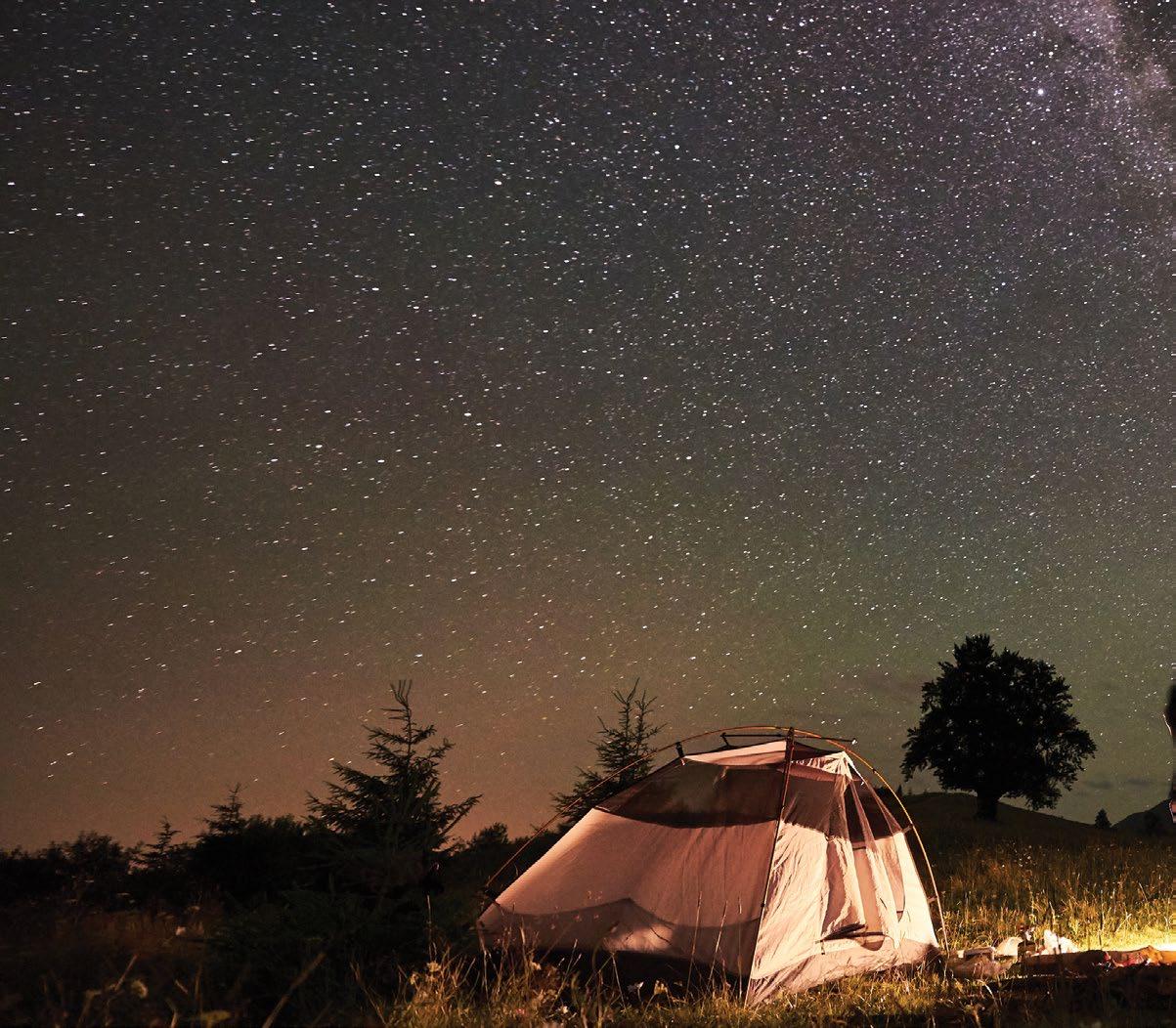
By Rob Henderson, LASUDC, CTRS
The Biophilia Hypothesis is a theory that states that humans not only enjoy nature and life-like processes, we also have a strong genetic yearning and attraction to them. Case in point: think about the photos, artwork, and wallpaper that adorn our homes and electronic devices. Many of these are expressions of nature, often in the form of striking landscapes or flora and fauna. Also, think about our dwellings and how highly we value homes with scenic vistas and natural surroundings. Oh, how Southern Utah spoils us in this area.
Take biophilia as a concept to the next level and you get ecopsychology, which studies the interaction between nature and human well-being and the impact of human well-being on nature. Ecopsychologists have found that we not only innately love Mother Nature, we essentially require frequent connections with her in order to maintain positive psychology and mental wellness. People who spend time outside and who engage with nature several
times per week feel more emotionally stable, are kinder, and are more creative, resilient, and grateful. They also report being more spiritually connected.
On the other hand, we’re seeing several negative psychological effects emerge as people in our country tend to watch more TV in a day than they spend outside and as they prefer theme and amusement parks over state and national parks. Nature deficiency, in its many forms, has been linked to a long list of mental suffering and unhealthy mindsets, including addictive behaviors, anxiety, depression, anger, rumination, and self-loathing. It’s like our minds are having an allergic reaction to spending too much time in unnatural and artificial environments.
As a dually licensed addiction and recreation therapist, I have seen the connection between nature and mental wellness firsthand, which is why nature and adventure are at the
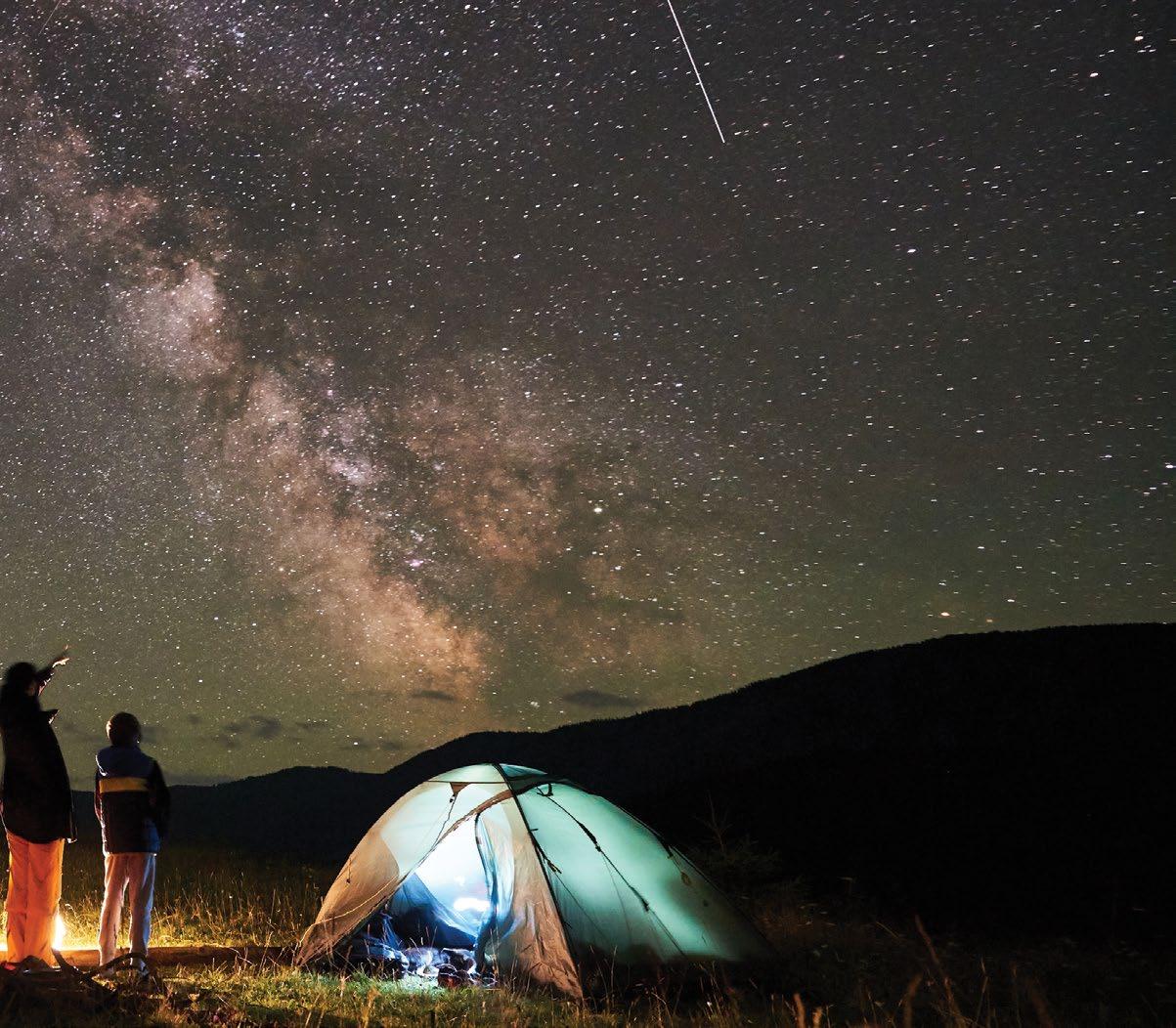
forefront of my private practice and my go-to interventions and modalities. As my therapy groups venture out into the backcountry, even just for an afternoon, they almost inevitably report positive psychological outcomes, like feeling uplifted, clearer-headed, and de-stressed. They also experience other significant mental reliefs, like not having to fight with cravings or perseverating thoughts. These benefits were summarized in a few profound words by a former client who had just reached the summit after a grueling hike: “Who’da thought there were other ways to get high!”
So on our journey to individual and relational health and wellness, consider asking these questions: When was the last time I felt awe and wonder at nature? How long has it been since I encountered an animal in the wild or an incredible force of nature? Have I slept under the night sky or taken a scenic drive away from the city lately? If you’re realizing that your time
has become hijacked by the unnatural and artificial environments that surround you, don’t fret. Course correct by treating your mind (and perhaps the minds of your crew, too) to an outdoor adventure where you can release your inner wild!
Additional Resource
For parents and educators: www.childrenandnature.org
For couples and clinicians: The Gottman Institute’s Relationship Growth Happens in Nature

Rob Henderson is a dually licensed addiction counselor and recreation therapist (see AREtherapy.com) and is also an experiential trainer for behavioral health professionals (see RITEtrainings.org). Rob is married with a ginormous family that loves to adventure together.
By Branden DuCharme, AWMA®
As individuals transition into retirement, effective tax planning becomes crucial. It can help retirees maximize their income and preserve their savings. Here are five key strategies to consider for efficient tax planning in retirement:
Retirement income can come from various sources, such as Social Security, pensions, retirement accounts (e.g. IRAs, 401(k) s), and investment income. Each of these sources is taxed differently. For instance, Social Security benefits may be partially taxable depending on your combined income. Planning involves understanding how each income source affects your tax bracket and taking steps to minimize taxes through strategic withdrawals. The Internal Revenue Service (IRS) provides guidelines on how different income types are taxed. Financial advisors often emphasize the importance of planning withdrawals from retirement accounts to avoid pushing oneself into a higher tax bracket, thereby increasing the tax liability on Social Security benefits and other income.
Strategic withdrawals can significantly reduce tax liability over the course of retirement. The general rule of thumb is to withdraw money from taxable accounts first, then tax-deferred accounts, and finally from tax-free accounts like Roth IRAs. This strategy allows tax-deferred accounts more time to grow, potentially reducing the overall tax burden.
Experts suggest using the years before required minimum distributions (RMDs) begin at age seventy-two to balance out tax brackets by converting traditional IRAs to Roth IRAs in years when income is lower. This move can save significant amounts in taxes over the long term by reducing the size of taxable RMDs and offering tax-free growth. This strategy may entirely change though for those retirees that continue to work part-time and still have earned income.
Even in retirement, there are numerous tax deductions and credits available. Common deductions include medical and dental expenses, which can be considerable in retirement. Retirees who itemize their deductions may be able to deduct medical expenses that exceed 7.5 percent of their adjusted gross income.
Furthermore, charitable contributions remain a viable tax deduction. Retirees who are required to take RMDs can benefit


from making charitable donations directly from their IRAs, a move that can satisfy RMD requirements without increasing taxable income.
While charitable giving is quintessential to many retirees’ happiness, it can make a large impact by strategically planning how you’d like to give, maximizing the tax benefits. If nothing else, tax planning around charitable giving may help preserve more funds to be donated to causes of your choosing.
Effective planning takes effort and adjustment. Things like changes in the tax code, market conditions, interest rates, your personal health, and goals along with a variety of other variables may drastically change each year, thus changing which opportunities may help you the most.
It is highly recommended to revisit your tax plan regularly and adjust it to the current and expected future conditions. Examples may be taking distributions from brokerage accounts with effective tax-loss harvesting in volatile years and delaying distributions to tax free funds like Roth IRAs and Roth 401(k)s.
In years in which you are participating in a favorable tax situation, you may choose to distribute more from your IRA or 401(k) and place it into a brokerage account looking for long-term capital gains treatment rather than continuing the tax deferral.
Effective tax planning in retirement is not merely about reducing taxes in the short term. It involves a comprehensive approach that considers income sources, withdrawal strategies, state tax implications, available deductions, and the impact on one’s estate. By addressing these key areas, retirees can further work towards building their financial future and potentially help their retirement savings last longer and serve them better.
Disclaimer: The opinions voiced in this material are for general information only and are not intended to provide specific advice or recommendations for any individual. Investing involves risk including possible loss of principal. No strategy assures success or protects against loss. To determine what is appropriate for you, consult your financial professional. This information is not intended to be a substitute for specific individualized tax or legal advice. We suggest that you discuss your specific tax or legal situation with your tax and/or legal professional. DuCharme Wealth Management & SCF Investment Advisors, Inc. are separate entities. Advisory services offered through SCF Investment Advisors, Inc. 10150 Meanley Drive, First Floor San Diego, CA 92131 (800) 955-2517 Fax (559) 456- 6109. www.scfsecurities.com. Local office: 50 E 100 S, Suite 300, St George, Utah 84770. 435-288-3396.













Pizza/Pasta Factory
Pasta Factory: 2 W. St. George Blvd. #8, St. George, UT 84770 | 435-674-3753
Pizza Factory: 2 W. St. George Blvd. #8, St. George, UT 84770 | 435-628-1234
Pizza Factory Express: 1930 W. Sunset Blvd., St. George, UT 84770 | 435-634-1234
Pizza Factory Pineview: 2376 E. Red Cliffs Dr., St. George, UT 84790 | 435-688-2656
Pizza | Pasta | Dine-In | Take-Out | Salad Bar | $$
Delivery available at Pine View location only
Mon.—Sat at 11:00 a.m.
The Pasta Factory, with its year-round, climate controlled outdoor patio dining wows with custom-made pasta, soups, sandwiches and salads. The Pizza Factory offers three locations with the best and freshest salad bar in town; homemade soups, sandwiches, famous bread twists and Southern Utah’s favorite pizza combinations.



Angelica’s Mexican Grill








101 E. St. George Blvd., St. George, UT 84770 | 435-628-4399
Mexican | Vegetarian and Vegan Options | Family Friendly | $
Mon.–Sat., 11:00 a.m.–9:00 p.m.; Closed Sun.
Located Downtown on St. George Boulevard, Angelica’s Mexican Grill serves fresh, made from scratch authentic Mexican food. The flavor driven and nationally recognized menu provides everything and more that you would expect from a Mexican restaurant, including street tacos, Mulitas, Tortas, Sweet Carnitas, Machaca, and their famous salsa bar. Vegan and Vegetarian dishes are always available. Seating is available inside and also outside on the spacious patio. Catering & To-Go ordering available.


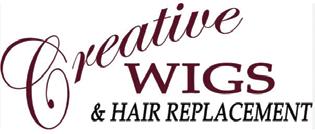
Creative wigs is dedicated to helping you feel confident and natural in times of hair loss. Hair loss is an issue that countless numbers of women and men struggle with. It can be frustrating to watch your hairline recede or find parts of your hair thinning. We want to help you move from possible tears to renewed hope. We have over 1,000 styles and colors from which to choose. With sixty years of experience, we are experts in helping people find the perfect hair that meets both their appearance and lifestyle needs.

Not only do we specialize in wigs and hair pieces, we also specialize in nonsurgical hair replacement. Our stylists are specifically trained to keep you up to date on the latest trends and styles for today’s generation. Our natural-looking hair replacement solutions outperform a toupee in terms of function and appearance. It’s a lowcost, nonsurgical hair replacement technique that mimics your natural hair. These systems are designed for men and women so they might experiment with their looks and try various styles


We also offer hair replacement and wig services including:
• Wig Fittings • Women’s Services
• Wig Repairs • Hair Pieces
• Men’s Services • Add-ons

and expressions. If you’re experiencing hair loss, we can help!

At Creative Wigs, we offer countless solutions. We also serve clients who just want to have a different look for each day of the week.

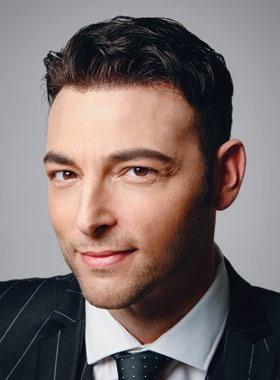

You don’t have to be experiencing hair loss to visit Creative Wigs. We provide traditional salon services, such as specialized cuts and hair color, so that we can offer something for everyone!
Our mission is to empower and inspire people to be who they truly are by accentuating their beauty. Our professional team of experts create a safe environment of respect, honesty, and individuality that honors each person’s journey. Creative Hair Replacement is dedicated to providing an uplifting experience with empathy and kindness, thereby establishing a long-lasting relationship of trust and commitment with our clients.


Come and see our beautiful new location with even more new styles to experience!




By Erin Del Toro, Registered Clinical Hypnotherapist, ACHE
“Sorry, I don’t do well with names.” “Once I crack the carton of ice cream, I can’t help but finish the whole thing.” “Nobody ever listens to me.” “No matter what I do, I will never get better.”
There is a common human tendency to pop phrases and words into expressions about what we are feeling without realizing the weight they have on our future. Without thinking too deeply about it, we casually introduce concepts with our thoughts and speech that have far more impact on how our lives run than most of us understand. If we pay attention to the negative thoughts and words that we think and say, we will find that we are telling an interactive story about the subconscious programming that shapes us.
Perhaps you recall Helen Hadsell, a woman who won contest after contest throughout her life. She won hundreds of sweepstakes contests— everything from kitchen appliances to an all-expenses-paid vacation to at-home permanent kits, but her biggest win was a brand new home built anywhere in the U.S., lot included. She won and won and won.
Can this be a coincidence? You and I both know that it can’t be, and so did Helen. Words and thoughts have energy, and she practiced and honed the way to create the energy of winning. When we change our energy and have an emotional response to the change, new neural pathways form. We begin to train our minds to remember to come back to that experience again, good or bad.
It would be nice if we could all figure out a way to create a similar superpower with our minds that gave us the thing we desired. The reason that most of us can’t or don’t is due to the programming that was instilled in us at a most sensitive developmental time for our brain: before the age of seven or eight. Even the most loving and best-intentioned parents have their own subconscious patterns from which they are working, and spillover occurs.
Helen may have had a fantastic primary experience with winning when she was young. Or maybe she grew up in a home where the feelings that were instilled were that she could always expect success. We know from her books that she willed or manifested her wins with positive words and thoughts. I see a woman who created the right combination of energy to get what she hoped for in her mind so well that metaphysical laws called for her to win, and the elements and energy we cannot see were compelled to deliver.
So how do we get programming like that? First, we’ve got to get rid of the old patterns and thoughts so our subconscious minds aren’t but in a bind, confused about what we really want.
Most of us think we have certain present or ongoing issues that arose from x, y, or z. The truth is, because of the science behind brain development, most of our present struggles have been a part of our patterns since we were quite young, which is what makes them so difficult to notice. We can see subconscious programming during our conscious state if we begin to notice the feelings that we have, track when they emerged, and ask ourselves, “How long have I had this feeling? Where did it begin?”
We can also pay attention to our thoughts and our speech to begin to get clues about what lies in our subconscious. When I speak to clients for the first time, much of what I need to know about what is plaguing them subconsciously can be summarized in one or two sentences they say in our first few minutes of conversation.
We are always writing our future with our words. When we say something like “I’ll never be able to afford that,” the subconscious mind is obedient. It then says to itself, “Jennifer wants to never be able to afford that.” It does a little I Dream of Jeannie impression, and poof—her wish comes true and finances continue to be a challenge.
It is interesting that when it comes to words and thoughts, the inverse is also true. When we start to change negative thoughts and words about ourselves and our situations, the patterns in our brains begin to be challenged, and we give ourselves the opportunity to create new programming. It probably won’t happen overnight, but with consistent effort over days, weeks, months, and sometimes years, the new pathways will eventually deepen and change your energy
and the frequency with which you resonate. In theory, you could become as proficient at changing your energy as Helen Hadsell.
A faster way to do this is with hypnosis. With direct access, we explore where the maladaptive programming began. We do some healing work and let you begin to create the new feelings you want. From there, your ability to change old words and thoughts that reinforced negative patterns becomes much easier and more automatic. You can change things consciously with sheer will and determination, and my hat is off to you when you do. But being able to access the subconscious directly through hypnotherapy is a fast pass to changing your mind, energy, and frequency.
If nothing else, please stop saying or thinking anything that reflects negatively on you in a permanent way. For instance, “I’ll never be able to afford that” can become “I can’t afford that now, but I’m going to be able to soon.” There is no reason to reinforce the idea that life is going to be hard.
Change your thoughts, change your words, change your patterns, change your energy and frequency, change your life.
If you would like more information on hypnotherapy, please call or text Erin at (435) 429-2560 or email erindeltoro@ gmail.com.
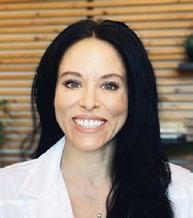
About the Author
Erin Del Toro is an ACHE Registered Clinical Hypnotherapist and owner of Balanced Modern Hypnotherapy. She’s passionate about changing the effects of trauma, rewriting unwanted habits and behaviors, and helping others unlock the power of their true potential. Erin lives in St. George with her twin daughters and enjoys participating in the ninja warrior sport and playing in the beautiful outdoors of southern Utah.

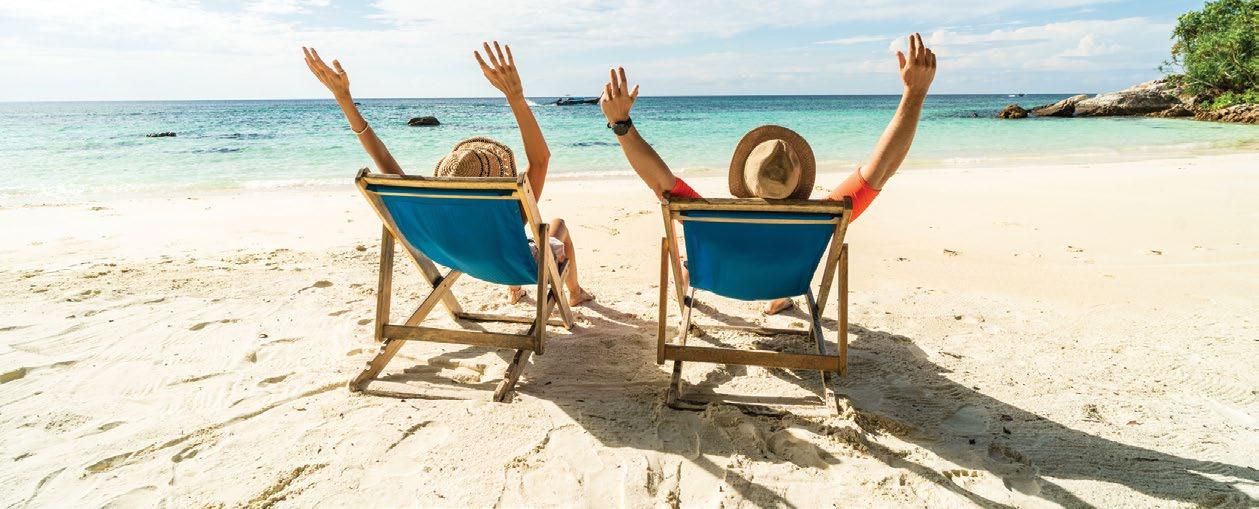

By Brigit Atkin
I remember hearing a story about a family that had a large painting of a ship on a stormy sea hanging on a prominent wall in their home. This family had several sons, and each one of them grew to pursue nautical professions. These boys aligned with what they saw over the course of their growing-up years. What they visualized impacted their thoughts and goals.
Images are powerful because they are so immediate. A Massachusetts Institute of Technology (MIT) study from 2014 found that people could identify an image as quickly as thirteen milliseconds. That’s pretty fast! Images impact emotions faster and more powerfully than words. You’ve likely heard the quote “A picture is worth a thousand words.”
What you see, especially repeatedly and consistently, has the ability to shape and form your thoughts and actions. It impacts
your mood and shapes future decisions. For all these reasons, I often suggest a Vision Board to my clients.
One important fact that sets vision boards apart from all other images you might see is that it is an intentional creation. You get to create the visuals that you need: the images that you want in your mind that will literally change the course of your trajectory from here forward. A vision board puts you in the unique position of being a creator in your life while also letting God and the laws of the universe govern the outcome. You allow yourself to be proactive while also learning how to receive. It creates an environment of balance in your daily life.
In order to successfully create your vision board, I suggest a particular pattern, the Vision Board Map, designed by mindset coach Kirk Duncan. As shown in the
image, a very successful way to design your board is listed as follows:
• Top Left Corner: WEALTH
• Top Center: WORK and REPUTATION
• Top Right: LOVE and RELATIONSHIPS
• Middle Left: FAMILY (your closest connections, people who support you)
• Middle Center: HEALTH and WELLNESS
• Middle Right: SPIRITUALITY
• Bottom Left: EDUCATION and LEARNING (development of intuition and knowledge)
• Bottom Center: SUCCESSES and ACHIEVEMENTS (accomplishments, awards, skills)
• Bottom Right: TRAVEL
Use clips from magazines, word graphics, concise affirmations, and family photos— images and graphics that speak to you— for these sections on your vision board. Use your instincts on what feels right and










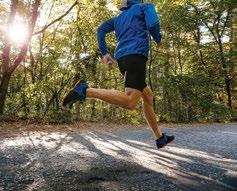

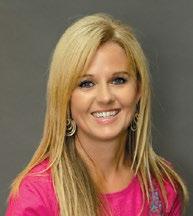





About the Author Brigit Atkin–Brigit of Brightworks helps improve the lives of others facing challenges and difficulties. She is certified in the SimplyALIGN™ method and was trained by founder Carolyn Cooper herself. For more information, visit www. brightworksbybrigit.com.
About the Author Brigit Atkin–Brigit of Brightworks helps improve the lives of others facing challenges and difficulties. She is certified in the SimplyALIGN™ method and was trained by founder Carolyn Cooper herself. For more information, visit www. brightworksbybrigit.com.

Instead of this unhealthy attachment, see if you can attach your happiness to a Higher Power, to God. See what changes.
what doesn’t. One thing to remember: you will have a tendency to limit yourself. This is something we all do, so use images and words that really move you, even if they seem out of your reach. You’ll be surprised what will transpire when you dare to dream, to push your boundaries.

Once you’ve retrieved your personal remote by accepting reality, now you must use it to navigate to your own happy channel. This sounds easy, but as we all know, it is not. Here is something that helps me and that I also use in my practice. As I begin working with a client, I accept the reality that I am not the one responsible for their healing; they are. I do my very best for that client, and when we are finished with the session, I tell them, “Now is the fun part; it is time to see how it all unfolds.” I then let go of the outcome. I check in with the client several days later, but I don’t carry around the worry of the outcome. I’m grateful for the experience of working with them, and I trust that all will work out. And it always does.
When your mind sees images repeatedly, it will work to bring it to reality. For this reason, you want your finished vision board on a wall that you see often. It is very personal, so putting it on your closet wall would be a great spot as long as you see it multiple times daily.
A very wise man, Gordon B. Hinckley, once said, “Anyone who imagines that bliss is normal is going to waste a lot of time running around shouting that he’s been robbed. The fact is that most putts don’t drop, most beef is tough, most children grow up to just be people, most successful marriages require a high degree of mutual toleration, and most jobs are more often dull than otherwise. Life is like an old time rail journey…delays, sidetracks, smoke, dust, cinders, and jolts interspersed only occasionally by beautiful vistas and thrilling bursts of speed. The trick is to thank the Lord for letting you have the ride.”
Once your vision board is complete and set in place, take the time to look at it frequently. Imagine that each of the nine sections on your vision board are actually happening. How does that feel? An aspiring author might visualize the image of his first published book while feeling the emotions of that accomplishment. A young adult with an eye toward the arts might gaze upon the ballet slippers placed on her vision board while feeling the experience of sharing her talent onstage. And a young boy who dreams of being a pilot might spend time admiring a picture of an airplane on his vision board while feeling himself in the cockpit.
Take back the remote control to your happiness. Safeguard it because your happiness depends on it. Be grateful in any circumstance, for this is a very important button in the drama of life. You have the power to choose what you tune into, what you turn down, what you change, and what you record for future viewing. You can choose to be happy. To paraphrase what I tell my clients, now is the fun part. See how it all unfolds: do the best you can, let go of the outcome, let a Higher Power be your guide, and trust that all will work out. It always does.
This is your life, your vision. Be the master creator of your own life with a Higher Power as you elevate your dreams and goals. Believe. Watch as your aspirations become reality. With your vision board, you have created the scaffolding from which your desires can take form. You were put here on earth to do more than you can imagine. A vision board will help you remove your self-limiting beliefs as you see yourself soar.



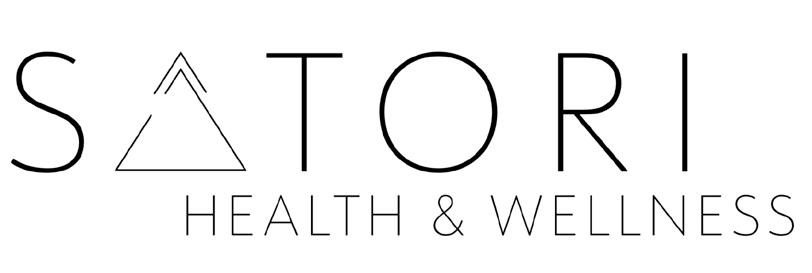


About the Author
Dr. Scott Allen is a St. George-raised, boardcertified anesthesiologist. He has specialty training in transplant anesthesiology and currently practices with Mountain West Anesthesiology at St. George Regional Hospital. He is also the medical director of Satori Health, an integrated ketamine clinic (www. theketamineclinic. com). Dr. Allen is the past president of the Washington County Medical Association. With his deep roots in Utah, he has a special passion for improving the mental healthcare of his friends and neighbors in the community. Dr, Allen enjoys outdoor pursuits with his family and communing with nature. He’s doing his best to stay grounded in the moment!
In the short span of a few years, ketamine has revolutionized mental healthcare. Though the medicine has been around for decades, ketamine has only become an accepted form of depression care since the pandemic. But ketamine can be used in a variety of ways, leaving potential patients scratching their heads at all the options. What works best for depression? What can help with PTSD? What’s the difference between intravenous and intranasal? While we can’t cover everything in this article, here are a few helpful tips:
1. IV Ketamine is the gold standard for patients with suicidal thoughts. Studies consistently show that intravenous ketamine can rapidly and reliably relieve suicidal thoughts. The duration of relief lasts from one day to several weeks, and 70 percent of patients have long-lasting relief after four to six treatments. IV ketamine works so well that in many inpatient psychiatry units, it is replacing traditional electroconvulsive therapy.
2. The quality of the experience determines depression relief. If you have a higher-quality experience, you will be more likely to have symptom relief. Choose a clinic that ensures safety, comfort, and support. This could mean a therapist sits with you during the infusion. All of the best clinics will help prepare you for the otherworldly experience that is a ketamine infusion. Stay away from clinics that don’t offer pre-therapy or posttherapy support.
3. Intranasal Ketamine (Spravato) works well for moderate depression. Spravato is sometimes covered by insurance, so it’s an attractive option for
By Scott Allen, MD, Medical Director, Satori Health and Wellness
many patients. It is not recommended for severe depression or people with suicidal thoughts.
4. IV Ketamine helps PTSD. PTSD is best treated alongside a skilled trauma therapist. IV ketamine by itself can relieve intrusive thoughts and physiologic triggers, but if the clinic is not staffed with a trauma-informed specialist, patients risk being retraumatized by the ketamine experience.
5. Ketamine lets you access your inner healing mechanism. All of us are born with an inner healing center that allows our brains to cope with the inevitable ups and downs of life. Sometimes, though, we get stuck, and we’re unable to access that healing center effectively. Ketamine takes you to the center of your mind, a center that is safe, secure, and has infinite potential. Ketamine lets you create a shortcut to that center, which you can access whenever you choose.
Obviously, everyone is different and like any other medical treatment, ketamine needs to be tailored to your specific situation. If you’re having severe depressive symptoms, IV ketamine is probably the way to go. If you want to work through trauma, working with a skilled trauma therapist can be essential. And if you want to unlock your inner healing center, higherdose IV ketamine allows you to view a part of your mind you never knew existed.
As always, contact us if you want to learn more about how ketamine can jumpstart a happier, healthier, more productive life!

By Chris Eschler, Health and Well-Being Life Coach
Are you wrestling with self-awareness? Do you find yourself asking, “Who am I, and what is my purpose?” When you are unsure of who you are, it can be daunting to articulate your inner struggles and attempt to resolve them. You may not even know why you’re grappling with these questions in the first place.
Rest assured that everyone experiences moments of self-doubt. Life’s journey is ripe with shifts, challenges, and unfamiliar territory that compel each of us to reevaluate who we are from time to time. Questioning your identity often accompanies intense, unsettled feelings of inner turmoil, confusion, loneliness, and despair. Nobody understands you better than you understand yourself, so when you find yourself in a state of identity uncertainty, it can be profoundly unnerving.
Identity triggers generally originate from significant life transitions. Identifying the origin of an identity crisis sometimes can be challenging, particularly when each transition appears to be seamless as you glide through time without recognizing its impact.
Major life transitions encompass various life stages and significant milestones, such as passing from childhood to adulthood, establishing newfound independence by moving out, and discerning between parental influences and one’s own identity. Other notable transitions include launching into a new career, entering into marriage or an intimate relationship, embracing parenthood, facing an empty nest, and beginning a much-anticipated retirement.
Each of these significant transitions consists of its own myriad of lifealtering experiences, such as coping with the loss of a loved one, navigating divorce, or facing adversities, traumas, and betrayals. The responsibilities of parenthood, often involving significant sacrifices, can prompt individuals to question their identity beyond the parental role. Likewise, being in a relationship with a domineering personality may lead to surrendering aspects of one’s identity.
The outcomes of life transitions often reflect whether you have remained authentic to yourself throughout the process. A continual following of someone else’s plan while compromising aspects of your own identity to make things easier or to avoid conflict eventually causes you to lose sight of who you truly are.
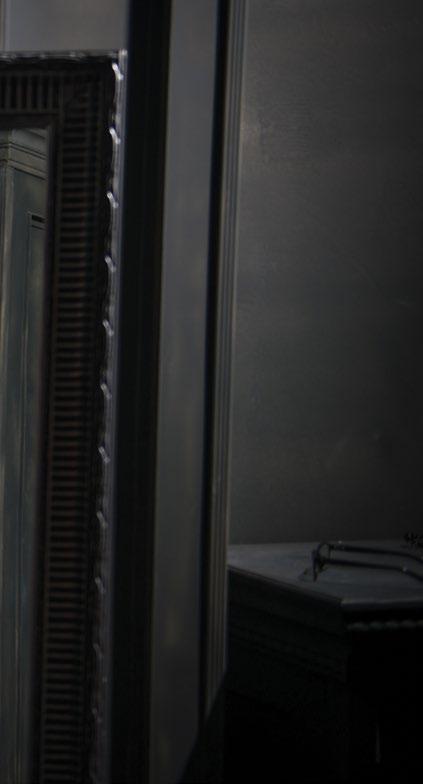
Suppressing or disregarding your genuine aspirations inevitably leads to a lack of self-awareness and confusion in other aspects of your life. One example would be questioning deeply revered roots, like your religious faith or your commitment to family. In these situations, it’s generally not religion or family aspiration that deserves scrutiny but rather your internal longing for autonomy. Your innate divinity is pleading for you to stop compromising “you” and embrace your true self. Examining the relationship between past transitions and taking responsibility for your own role in the decline of your self-awareness empowers you to make the necessary changes to unveil your authentic self.
• Surround yourself with trusted individuals who can shed light on your talents and strengths. Allocate time to journal about these insights and assess if they truly resonate with you.
• Define your fundamental values. Reflect in your journal about how you plan to live in alignment with these values. Are you actively integrating your values to pursue self-fulfillment, ensuring that your actions are in harmony with your divine purpose?

• Write your “I” statement. Craft it to express your divine purpose—a mission statement that affirms who you are and outlines how you will guide your life going forward. Pause to evaluate whether your decisions align with your purpose and values. With a clearly defined purpose, you can shape the life you desire rather than being swayed by the whims of others.
• Dedicate moments for introspection to investigate pathways toward personal fulfillment. Amidst uncertainty, there’s a tendency to pursue fleeting moments of pleasure that may resemble happiness but contradict your true nature. An identity crisis can deter even the most health-conscious individual towards unhealthy lifestyles.
• Carve out time for quiet reflection and contemplation about your individual divine purpose. Reflect on the past experiences, current circumstances, and future aspirations that genuinely bring you joy.
• Consider revisiting an activity you once loved.
Self-identity is crucial. Your perception of yourself profoundly influences every aspect of your life. It shapes your behavior, your responses, your interactions with others, your self-esteem, and your decision-making process. Ultimately, it defines the very essence of your existence. Therefore, reflect on not just who you are at this moment but also on the timeless truth of your inherent nature.
Chris Eschler earned a BS in Marriage and Family Sciences at Brigham Young University-Idaho. As a life coach at Ascend Counseling and Wellness. Chris works with individuals to develop their skills and provides a safe, accepting environment for exploring a wide range of thoughts and feelings. Chris knows that you are the expert of your life and that she is simply a guide. She currently sees couples with her husband, licensed therapist Matt Eschler. Together they assist couples with all couples issues, specializing in high conflict couples work. To schedule an appointment with Chris for life coaching, call Ascend Counseling and Wellness at 435-688-1111 or visit https://ascendcw.com/.


By Koby Taylor, PharmD
Every day, more people are taking charge of their own health, inspired by social media and podcasts that highlight health awareness and alternative methods and treatments. This trend is driving a growing interest in self-guided lab testing kits, which give individuals like you the power to monitor your health on your own terms.
Thanks to today’s digital age, we all now have access to a wide range of self-guided labs that can pinpoint health markers that may not be included in standard blood tests.
And what’s more, access to these tests is as easy as ordering them through my pharmacy. Let me give you more insight.
What is self-guided lab work? Simply answered, self-guided blood, saliva, or urine lab work means you can choose the tests for yourself without the need for a prescription. These tests can provide valuable insights into various aspects of health within your body, including nutrient levels, hormone balance, brain health,inflammation markers, methylation processes, and more. By analyzing these markers, you can gain a deeper understanding of your overall health status and identify potential areas for improvement.
Why should you consider this option? Self-guided lab work allows you to take a proactive approach to your health by monitoring changes in your health markers over time. By getting a baseline and tracking these markers regularly, you can identify trends and make informed decisions about your lifestyle, diet, and supplementation to optimize your health.
Another benefit of self-guided health labs is that these tests are easy and convenient. Once you have the kit, you simply take the test in the comfort of your home and send it through the mail. The specimen for the test is either a small drop of blood from your finger, a cheek swab, a small vial of urine, a sample of saliva, or a strand of your hair.
How do you choose the right test for you? With so many options, it can be confusing. When you order our self-guided health labs, we start by discussing your concerns and any health conditions you might already have. We also inquire about what tests you’ve done before and figure out which new tests will complement those.
We offer the following self-guided health test types: • Menopause: not only looks at your hormone levels but also tests your vitamin D and thyroid function.

• Brain health, neurotransmitters, and BDNF (brain-derived neurotrophic factor), a protein that supports the growth, survival, and function of brain cells, playing a key role in sleep, learning, and memory.
• Food sensitivity.
• Parasites.
• Hormones: tests male and female sex hormones.
• Liver health as it relates to diabetes and/or obesity.
• Heavy metals.
• GI balance and function assay.
• Organic Acid Test: evaluates over seventy urinary metabolites that can be useful for discovering underlying causes of chronic illness.
• Mycotoxins: lets you know if you have been in contact with certain mold species from your home, work, vehicles, and/ or food.
• Dutch Test: a complete sex hormone level panel that also includes cortisol, adrenal, and melatonin (as well as their metabolites) and the Organic Acid Test.
• Wellness Genetic Test: looks at your genes, including MTHFR, MTRR, COMT, MAO, PEMT, and FUT2.
• Comprehensive panel through Labcorp.

About the Author
Are these tests reliable? The tests I carry at my pharmacy are reliable and are used commonly throughout the United States by many types of healthcare providers. I only carry wellvetted brands with national recognition. In short, I’ve taken the guesswork out of it for you. We carry tests from ZRT, 5Strands, MosiacDX, DNARX, Doctor’s Data, and Diagnostic Solutions. All are nationally recognized.
How much do these tests cost? Depending on the test, they range from $149 to $350. If purchased through my pharmacy, all tests include an analysis of your results and a consultation to formulate a plan to get you feeling like your old self once again. If you are someone who has limitations because you either don’t have insurance or your insurance has restrictions on the type of tests they will cover, these self-guided lab work tests could be the answer you’re looking for.
How do you get your test results, and what do you do with them? When you order from my pharmacy, your results will come back to us, and you’ll be sent a link to make an appointment to discuss them. You’ll also receive a copy of your results, which you can share with your provider and keep for your own records.
If you or someone you love has a health condition, I highly recommend exploring this option. With self-guided health labs, you are able to examine the effects of your current health condition and get a snapshot of any overlooked underlying conditions, allowing you to take a proactive approach on your journey to wellness and healing.
To view the test types further, please visit our website at FusionSpecialtyPharmacy.com, or call us at (435) 703-9680 with your questions.

Koby Taylor, PharmD, is the owner and pharmacist of Fusion Pharmacy. Working as a retail pharmacist early in his career, Koby began to see that pharmacy patients needed to have access to available alternative medications. He realized that pharmacy in its truest form is compounding, and he wanted to be able to provide patients with customized medications. He also desired more personalized interactions with patients in order to truly help their health and well-being. To fulfill his passion for improving the health of patients and educating them about compounding, Koby opened the doors of Fusion Pharmacy in 2013. Today, Fusion is nationally accredited with PCAB. It is licensed in and ships to 32 states. Fusion is proud to have two locations to better serve the southern Utah community. Koby graduated from Brigham Young University with a degree in molecular biology in 1995 and from the University of Utah with his Doctorate of Pharmacy in 2000.

By Becky Hurd, Enrollment and Recruitment Coordinator, Big Brothers Big Sisters

About the Author
Becky Hurd has been the enrollment and recruitment coordinator with Big Brothers Big Sisters of Southern Utah since 2021. She earned her bachelor’s degree in sociology from Southern Utah University. Prior to working for a nonprofit, she worked with adults with disabilities, in child welfare, and in residential treatment facilities. She lives with her three children in Washington, Utah.
When Little Brother Jonathan’s* mother passed away and he went to live with his grandmother Lupita, his world turned upside down. Lupita knew that raising her grandson would be a challenge, so she turned to the Big Brothers Big Sisters program for additional support, knowing that they provided carefully screened mentors for children and helped support them through difficult circumstances. “I wanted Jonathan to have his own special time with his own friend, one-on-one,” she said.
After applying online and going through the enrollment process, Jonathan was accepted into the program and matched with his Big Brother Kevin. The program was nothing new to Kevin; he had been a Big Brother to another youth in Tennessee while he finished graduate school. “Growing up, one of my closest friends had a Big Brother,” Kevin explained. “Seeing their relationship inspired me over the years and gave me an example of how small, consistent efforts can positively impact a child’s life so immensely.”
Lupita, Jonathan, and Kevin committed to being matched in the program for at least twelve months and to doing at least two activities a month. At the beginning of their match, Jonathan was shy and reserved. Kevin was patient with him as they got to know each other and developed a friendship. They connected through common interests and activities, like playing Pokémon GO, laser tag, and bowling and eating a lot of good food. They also spent time together at the agency-wide activities offered through the Brothers Big Sisters program including car shows, pool parties, holiday parties, and sports clinics.
Throughout the duration of their match, Tresa Downey, match support specialist for the sixty-five-plus Big Brothers Big Sisters matches in Washington County, was there to offer guidance and advice. “Kevin has been incredibly consistent and truly values his role as a mentor. Lately, he has been working hard to help Jonathan plan for his post-high school future,” she said.
Although Kevin and Jonathan agreed to only twelve months in the program, they have now been matched for five and a half years. “I’ve noticed that my Little Brother has really learned to verbalize things that are going on in his life,” said Kevin, smiling. “We have had many conversations about where he wants to go in his future.”
Most youth matched in the program experience improvements like increased self-esteem and better academic achievement after just one year. But after seeing Jonathan improve so drastically
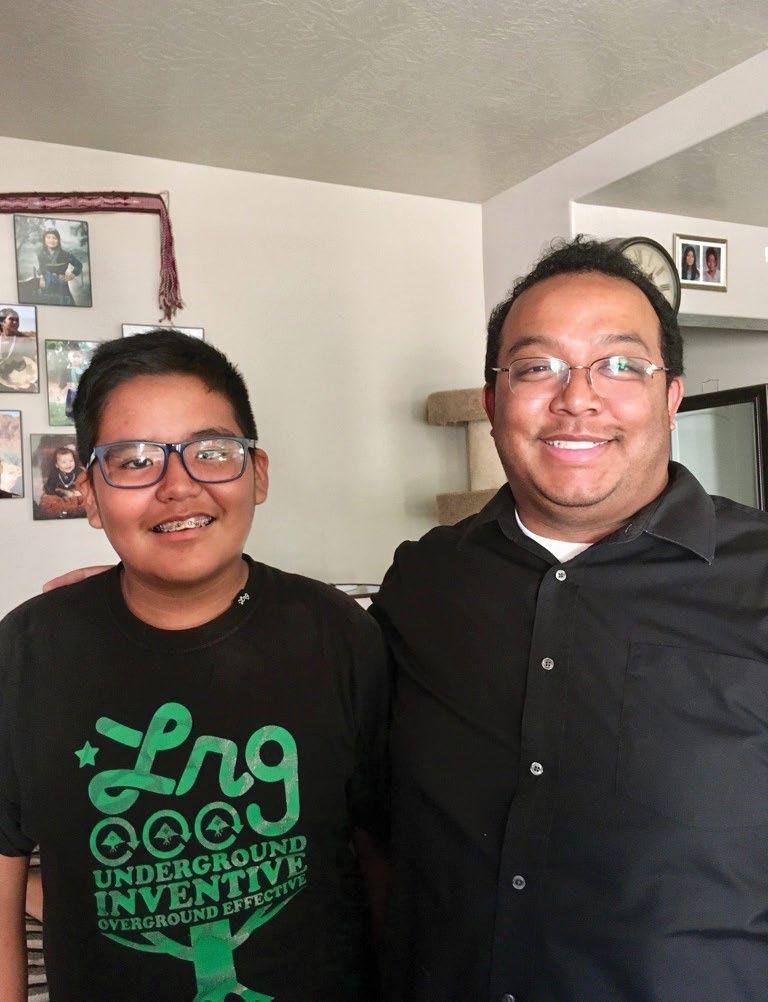
over the years, Kevin would agree that Jonathan has not been the only one who has benefited from the match. “There are a lot of things Jonathan has taught me, like opening yourself up to others and creating bonds that connect you to others,” he said. Their match has stayed active, even in some very difficult circumstances. During the 2021 pandemic, they met virtually, helping them to realize that their relationships with the people they cared about could get them through anything.
Jonathan will graduate from high school in May of 2025 and has plans to become a welder. He feels much of his high school success was influenced by his Big Brother. “Having a Big Brother helped me get an idea about money and careers and helped teach me about being an adult,” said Jonathan. “I feel like he’s my actual big brother. He’s made a big impact on my life.”
For those considering becoming a mentor, Kevin emphatically encourages them to take the leap and do it. “I know most of us have the time to get an ice cream, go to the park for a bike ride, or do other activities that can enrich the life of someone else.” Jonathan also recommends the program for any youth struggling. “I would tell a kid that wanted to join that it wouldn’t hurt to try the program. You could build a bond with whoever you get matched to.”
For more information on the BBBS program or to apply, visit www. bbbsu.org.
*Names have been changed to protect anonymity.
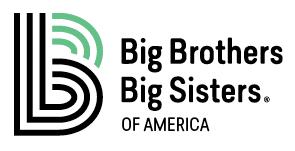






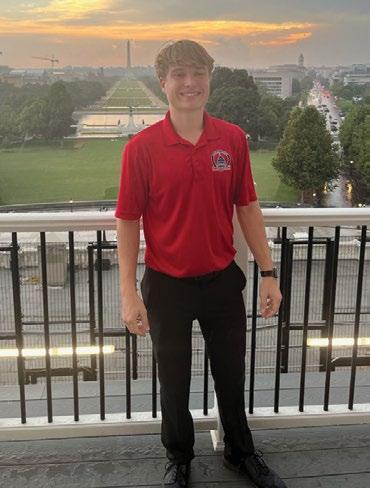
In May of 2023, I spontaneously decided to participate in the American Legion Utah Boys State program. I printed an application, contacted the American Legion, and scheduled an interview with a legionnaire. The week of the interview, I was so busy between work, studying for an AP exam, and a school dance that the legionnaire came to interview me at work in the back of Olive Garden amidst the smell of breadsticks and the muffled sounds of the dining guests. I am glad I seized the opportunity to participate; I was chosen to attend Boys State, and through that experience, I was selected by my peers there to participate in a week of unexpected camaraderie and self-discovery in Washington D.C. at Boys Nation, where I learned some of the most important lessons of my life.
In July 2023, I flew to Washington D.C. Upon landing, I entered a week filled with steep competition and self-promotion as I learned about the structure and function of the federal government. I attended lectures, visited federal agencies and historical sights, and met with the elected officials from Utah. I quickly learned my first lesson: individuals with common objectives work well together. I saw this happen time and time again. From the first meeting at the chaotic airport through the party conventions and the Boys Nation senate sessions, I was surprised how well everyone cooperated and interacted.
During the week, my second lesson unfolded: the most accomplished people

By Carsen Cooper, 2024 Graduate,
are just as human as I am. As I got to know the other participants, listened to the speakers, and met with congresspeople, I felt truly inspired. The time I spent with them gave me opportunities to see their humanity and exposed me to countless possibilities I never dreamed of. I left Boys Nation knowing that if they could do it, I could do it, too! I now feel far more comfortable participating in leadership roles wherever and whenever I have an interest. In fact, I became vice president of my school’s service club and helped improve outreach and communication efforts to increase participation. As president of the Orchestra Club, I explored fundraising opportunities and helped instill structure in the club so it could be effective even after I graduated.
My third lesson was one I learned after being home from Boys Nation for a few months: it is not about what you know but who you know. As I have further cultivated the connections I made during Boys Nation, I have continued to be inspired by the friends and contacts I made. I have connections with people from Alaska to Florida. And because of this, I have a strong pool of knowledge to help propel my ambitions. I have already used their advice to guide me in my leadership roles at school. Additionally, I’ve found more joy

and motivation in personal study as I have people who are willing to learn with me. We have dived into research on decentralized finance and explored classical literature, including Shakespeare and the King James Version of the Bible as a cultural text. Most recently, they helped me with the college application process.
Overall, my Boys Nation connections have broadened my capabilities in numerous ways. It made me a better leader, equipped me with a deeper insight into human nature, gave me a heightened sense of motivation, and blessed me with a wideranging network of accomplished peers. As I carry the lessons I learned forward, I am a more insightful individual in matters of government and a more capable, compassionate person. Boys Nation didn’t just make me better; it empowered me to make a meaningful difference in the world.
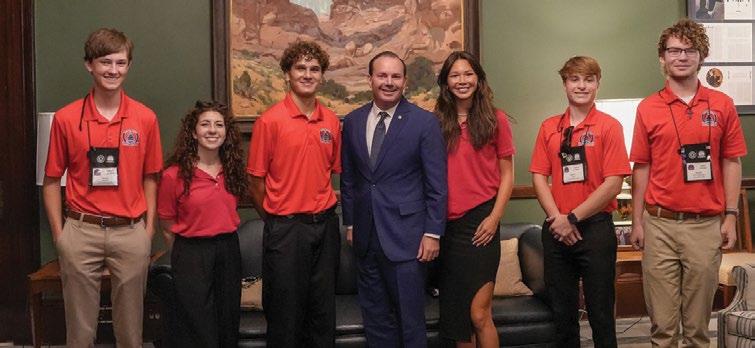

There are countless ways you can make your environmental contributions felt. If you’d like to join millions of others in the fight for Mother Earth, consider one of the most popular gifts given back to the world each year: planting a tree.
Here are five tips that will help you properly plant a tree in your own yard:
Depending on where you live and your desired outcome, choosing the right tree and planting location are critical factors. Larger shade trees help cool homes in warmer climates, evergreens provide privacy, and fruit trees offer a grocery store right in your backyard. Consider your available space along with conditions that will impact the tree itself, such as soil conditions, sun exposure, drainage, and more.
Before digging, remember that proper tree placement requires factoring in underground utility lines, overhead power lines, and proximity to sidewalks,
driveways, and homes. Dial 811, the national call-before-you-dig number, to locate underground utilities, and consider contacting an arborist or tree care professional to make sure you’ve weighed all the important factors.
Dig a hole that’s roughly two to three times wider than the root ball of your tree and equally as deep as the root ball. Be sure the trunk flare (where the trunk expands at the base of the tree) is partially visible when planted. Remove any wrapping or cover from the root ball and trunk. Lift from the root ball, not the trunk, to place in the hole, then straighten vertically, and firmly backfill soil around the root ball to stabilize.
Mulching helps maintain moisture and improve soil conditions while controlling weed growth. Place a two-to-three-inch layer in a three-foot radius around the base of the tree without touching the trunk itself.
Make sure your tree has enough water to grow strong by keeping the soil moist. Typically, this means watering just once per week, barring rain, but may require more frequency during especially hot weather.
Find more tips for giving back to Mother Earth at eLivingtoday.com.
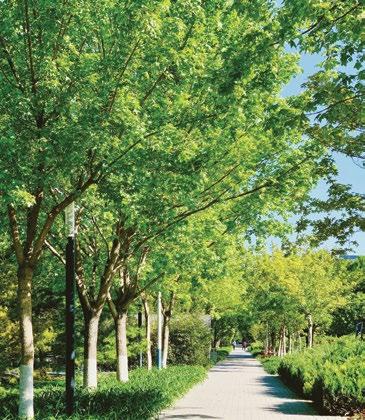

Article Courtesy of Healthy Family Project and Family Features
Eating a balanced diet with fruits, vegetables, whole grains, dairy, and proteins is a crucial first step toward a healthy life.
Even with hectic schedules and convenience foods readily available, it’s important to incorporate habits like regular family meals and meal planning so you have a variety of better-for-you snacks and recipes on hand. Also important is leading by example and modeling healthy eating habits to help improve overall nutrition for you and your family members, especially children.
If you are looking for ways to make nutrition fun, the experts at Healthy Family Project, along with its fruit and vegetable partners, are offering an online nutrition resource center as part of Mission for Nutrition 2024.
Geared toward dietitians, nutrition professionals, and anyone involved in nutrition education, the resource center is a one-stop shop to make nutrition education fun and inspiring, featuring more than 600 dietitian-approved recipes; tips to pick, prepare,
and store more than fifty fruits and vegetables during every season; a podcast, e-cookbook, and monthly newsletter; and free downloadables, infographics, activities for kids, and more.
Dietitians and nutrition professionals can sign up to receive this year’s Mission for Nutrition kit, which is full of resources to use in classrooms, in-store with customers, or wherever they’re supporting nutrition education. Available by request only, the kit includes a roll of “I’m a Healthy Eater” stickers, seasonal counter cards, mini magazines, demo ideas, a Healthy Family Project spatula, and additional resources and information from produce partners.
As part of the mission, the partner brands are making a donation to improve access to fresh produce in schools through the Foundation for Fresh Produce.
To find more resources, tips, and recipes to encourage proper nutrition, visit HealthyFamilyProject.com.

Drowning is a leading cause of death for children ages one through four, according to the Centers for Disease Control and Prevention. During the summer months, when water activities are more prevalent, drowning is more common, according to the National Safety Council.
Extreme heat may increase incidents of cardiac arrest and an average of thirtythree drownings occur in the U.S. each day, one-third of which are fatal. To protect your loved ones when playing in and around water this summer, keep these tips from the American Heart Association in mind:
• Never swim alone. Children always need supervision, but even adults should swim with a buddy so someone can call for help if an unexpected problem arises. Swimmers can get cramps that
hinder movement in the water and slips and falls can happen to anyone.
• Wear protective devices. U.S. CoastGuard-approved life jackets provide the best protection for someone who is in the water and unable to safely reach solid footing. When on a boat, all passengers should wear life jackets in case of an accident, and young and inexperienced swimmers should wear one any time they are near water.
• Choose your swimming location wisely. Avoid unknown bodies of water where hazards such as tree limbs or rocks may be hidden below the surface. Also avoid waterways with strong currents, such as rivers, that can easily carry even the strongest swimmers away. Instead, choose swimming pools and locations
• Learn cardiopulmonary resuscitation (CPR). In the event of a drowning, no matter the age, the American Heart Association recommends rescue breaths along with chest compressions to keep oxygen circulating to the brain. Only 39 percent of those who participated in a consumer survey said they were familiar with conventional CPR, and only 23 percent knew about Hands-Only CPR.
Consider these ways to learn CPR and join the Nation of Lifesavers as an individual, family, organization, or community.
Watch online. Learn the basics of HandsOnly CPR by watching an instructional video online. Hands-Only CPR has just two simple steps:
1. Call 911 if you see someone suddenly collapse.
2. Push hard and fast in the center of the chest to the beat of a familiar song with 100 to 120 beats per minute, such as “Stayin’ Alive” by the Bee Gees.
Immerse yourself. Through a virtual reality app, you can learn how to perform Hands-Only CPR and use an automated external defibrillator (AED). Then, put your skills to the test in real-life scenarios.
Learn at home. Learn basic lifesaving skills in about twenty minutes from the comfort and privacy of home with CPR Anytime kits. The Infant CPR Anytime program is for new parents, grandparents, babysitters, nannies, and anyone who wants to learn lifesaving infant CPR and choking relief skills. The Adult and Child CPR Anytime Training kit teaches adults and teens Hands-Only CPR, child CPR with breaths, adult and child choking relief, and general awareness of AEDs.
